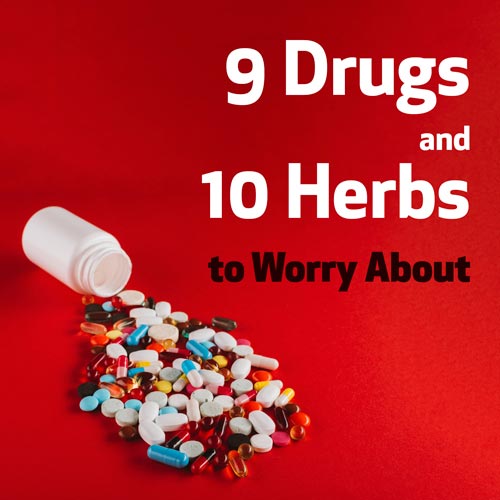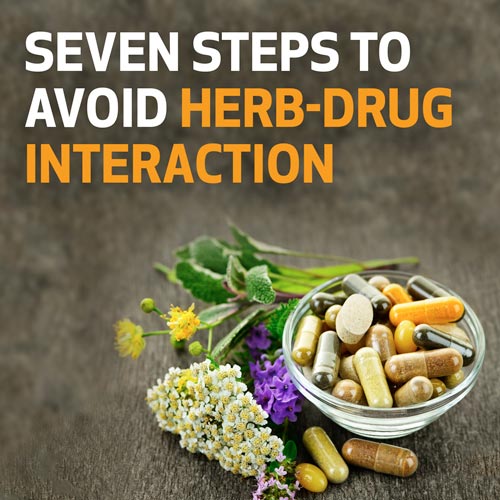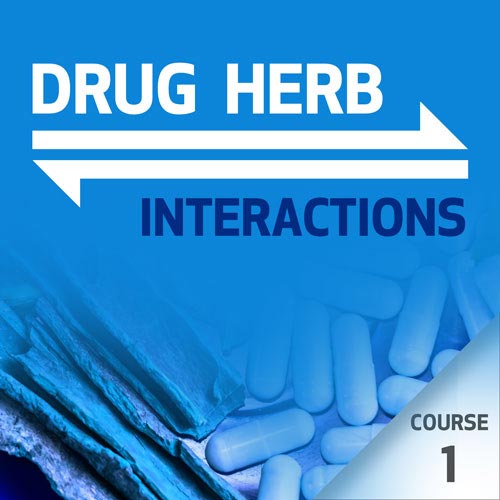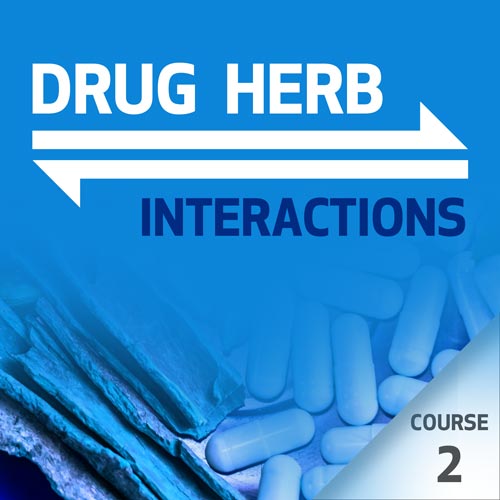HMG - Coa Reductase Inhibitors
Atorvastatin is one of the best selling drugs in the world if not the best seller. Therefore this class of drugs is very important for Oriental medical practitioners to know and understand. This excerpt from the book Integrated Pharmacology, Combining Modern Pharmacology with Chinese Medicine will examine them, how they work, and what we need to know about their adverse effects and herbal interactions.
ATORVASTATIN (a TORE va sta tin) (Caduet®,[i] Lipitor®)
FLUVASTATIN (FLOO va sta tin) (Lescol® XL, Lescol®)
LOVASTATIN (LOE va sta tin) (Advicor®, Altoprev™, Mevacor®)
PRAVASTATIN (PRA va stat in) (Pravachol®)
ROSUVASTATIN (roe SOO va sta tin) (Crestor®)
SIMVASTATIN (SIM va stat in) (Vytorin™, Zocor®)
The drugs in this class are commonly known as statins, as that is the last part in each agent’s name. The herb Hong Qu (red yeast rice) has been found to include several of the statins as natural constituents. It is an excellent whole food alternative to a statin drug. Be advised, however, that dosing is critical, with most current studies showing beneficial effects at 2.4g a day.
Function
These drugs are used to treat hyperlipidemia including hypertriglyceridemia and hypercholesterolemia.
Mechanisms of Action
The agents in this class have two major mechanisms for reducing LDL and VLDL cholesterol. The first mechanism is by inhibiting 3-hydroxy- 3-methylglutarate (HMG) coenzyme A (CoA) reductase which is an enzyme necessary to produce cholesterol. Some of these agents do this directly and others need to be metabolized to the active agent.
The second mechanism of action for these drugs is due to a reduction of LDL cholesterol in the cell due to the inhibition of HMG-CoA reductase. The cell starts to produce more LDL receptors on the cell surface which bind and reduce LDL that is in the blood. These effects are summarized in the figure 1.
Besides these effects, HMG-CoA reductase inhibitors also tend to raise HDL (the “good” cholesterol) cholesterol, stabilize plaques, so that they don’t break off and form an emboli, improve cardiac endothelial function, inhibit platelet thrombus synthesis, and have some anti-inflammatory effects. All of these are very beneficial in preventing or minimizing coronary heart disease, even though the exact mechanisms of these actions are not completely understood.
Figure 1: Effects of HMG CoA reductase inhibitors (statins). 1: HMG CoA reductase is inhibited and reduces the amount of cholesterol produced in the cell. 2: Reduced cholesterol initiates LDL receptor synthesis. 3: An increased number of LDL receptors on the cell membrane increases the amount of cholesterol removed from the blood and hence lowers circulating LDL. 4: Low intracellular VLDL lowers secretion into the blood.
Dosages
ATORVASTATIN, adjustments should be made at intervals of 2-4 weeks. For children 10-17 years: 10 mg once daily; may increase to 20 mg once daily, doses >20 mg have not been studied. For adolescents >17 years and adults, initiate at 10-20 mg once daily, patients who require a reduction of >45% in LDL-C may be started at 40 mg once daily, recommended dosage range is 10-80 mg/day.
FLUVASTATIN, for adolescents 10-16 years, initiate at 20 mg once daily, may increase every 6 weeks based on tolerability and response to a maximum recommended dose of 80 mg/day, given in 2 divided doses (immediate release capsule) or as a single daily dose (extended-release tablet). For adults, for patients requiring ≥25% decrease in LDL, 40 mg capsule once daily in the evening or 80 mg extended release tablet once daily (anytime), or 40 mg capsule bid; for patients requiring less than 25% decrease in LDL, initiate at: 20 mg capsule once daily in the evening; may increase based on tolerability and response to a maximum recommended dose of 80 mg/day, given in 2 divided doses (immediate release capsule) or as a single daily dose (extended release tablet).
LOVASTATIN, for children and adolescents 10-17 years, initiate at, using immediate release formulation, 10 mg once daily, increase to 20 mg once daily after 8 weeks and 40 mg once daily after 16 weeks as needed. Girls must be at least 1-year post-menarche. For adults, using immediate release tablet, initiate at 20 mg once daily and adjust dosage at 4-week intervals to a usual range of 10-80 mg/day in a single or 2 divided doses; for extended-release tablet, initiate at 20mg once daily and adjust dosage at 4-week intervals up to a maximum dose of 60 mg/day.
PRAVASTATIN, for children, 8-13 years, 20 mg/ day, 14-18 years, 40 mg/day. For adults, initiate at 40 mg once daily, usual dose range is 10-80 mg with a maximum dose of 80 mg once daily.
ROSUVASTATIN, for adults, initiate at 10 mg once daily (20 mg in patients with severe hypercholesterolemia or 5 mg in patients requiring less aggressive treatment or predisposed to myopathy), after 2 weeks, may be increased by 5-10 mg once daily, usual dosing range is 5-40 mg/day up to a maximum dose of 40 mg once daily.
SIMVASTATIN, adjustments should be made at intervals of 4 weeks or more. For children 10- 17 years (females >1 year post menarche), 10 mg once daily in the evening increasing to a usual dose range of 10-40 mg/day and a daily maximum of 40 mg. For adults, 20-40 mg once daily in the evening, changing to a usual range of 5-80 mg/day.
Adverse Effects
In general, these drugs are quite safe and the incidence of adverse effects is minimal. With that said, there are some serious, if rare, adverse effects. These include liver failure, muscle abnormalities, and rhabdomyolysis. These last two effects are more prominent in patients who have renal issues, or were taking other drugs with the statin. The drugs showing this increased risk include cyclosporine, itraconazole, erythromycin, gemfibrozil, and niacin. These drugs should not be used during pregnancy or breast feeding, and only under specific conditions should they be used in children and teenagers.
Rosuvastatin has been implicated by several FDA scientists as having more adverse effects than other statins and they have gone public with suggestions to take it off the market.
"Rhabdomyolysis: An acute, potentially fatal disease of destruction of skeletal muscle; signs include myoglobinemia and myoglobinuria"
Red Flags
None noted.
Interactions
Drug
Taking a statin with cyclosporine, itraconazole, erythromycin, gemfibrozil, or niacin may increase the risk of myopathies and rhabdomyolysis. These agents also increase warfarin levels and increased observation of prothrombin times is warranted.
Herb
The letters after the herb names indicate the level of evidence of the interaction. “A” level is highest and “D” level lowest.
Anticholesterol Agents
• Da Suan (Garlic) (D)–may potentiate cholesterol lowering agents as shown in metaanalysis of human clinical trials (Silagy, Neil, 1994) Level 5 evidence.
• Hu Lu Ba (Fenugreek) (D)–may potentiate cholesterol lowering agents as shown in several small human studies and one dog study (Mills & Bone, 2000) Level 5 evidence.
Lovastatin
• Hong Qu (Red yeast rice) (D)–should not be used with gemfibrozil or lovastatin as severe rhabdomyolysis and myopathy have been reported, expert opinion (Chen & Chen, 2004) Level 5 evidence.
Other Supplements
• CoQ-10 is an excellent supplement to administer with statins. It has been found to reduce the amount of adverse effects.
Provisional Chinese Medical Description
HMG-COA reductase inhibitors are used to treat high serum cholesterol. The side effects of these drugs include:
• Muscle cramps
• Liver failure
• Acute kidney failure
In Chinese medicine, the clinical symptoms of high cholesterol are all associated with blood stasis, such as chest impediment and angina pectoris, while muscle cramps are mainly due to blood vacuity.
We have seen that excessive or inappropriate use of blood-quickening medicinals can damage the blood. The signs and symptoms of acute renal failure include peripheral edema, weight gain, anorexia, lack of strength, nausea and vomiting and other such symptoms of qi vacuity. The signs and symptoms of liver failure also indicate spleen qi vacuity, such as jaundice. Fatigue, somnolence, lack of strength, and orthostatic hypotension. Therefore, we believe that these drugs should also be classified as blood-quickening medicinals (huo xue yao).
Other Courses By This Teacher


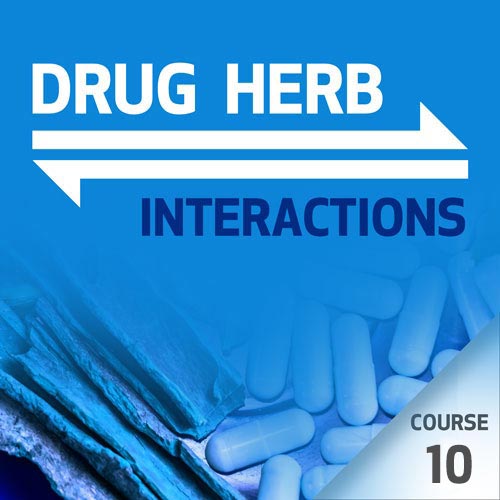

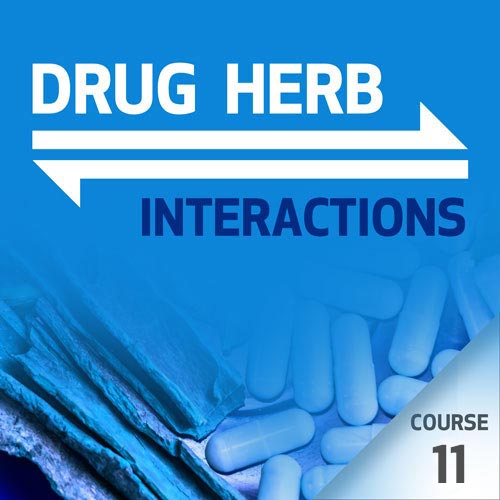

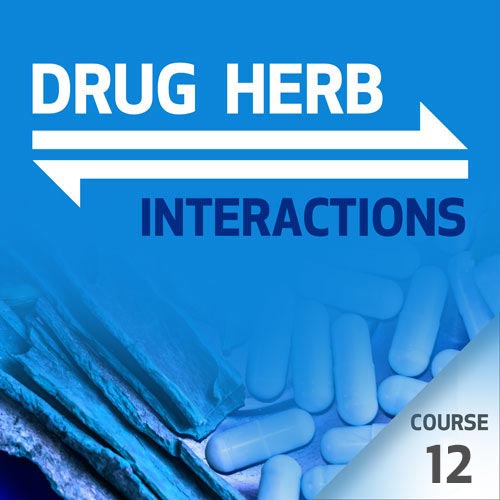

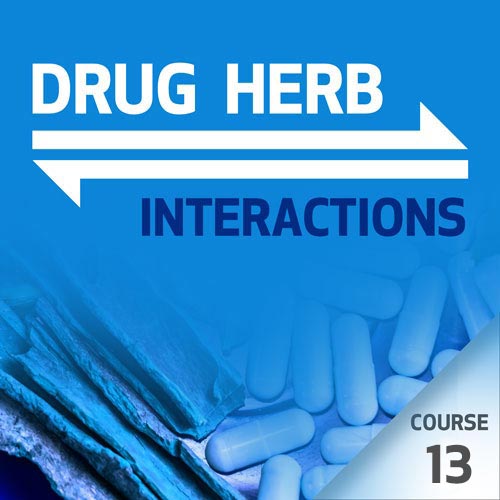

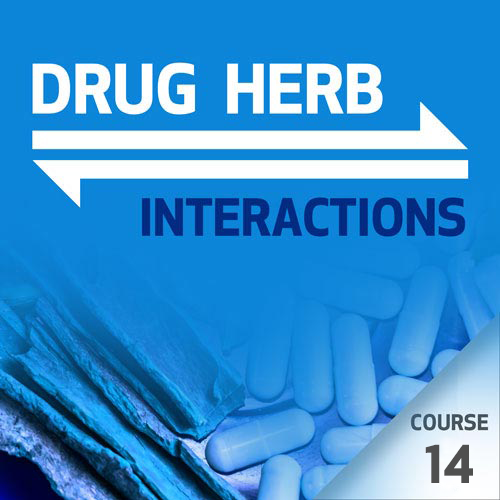

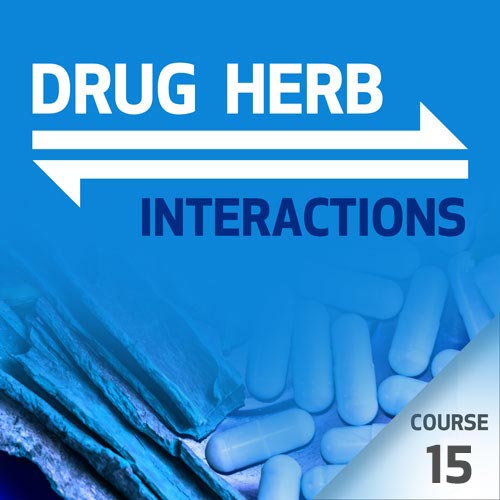

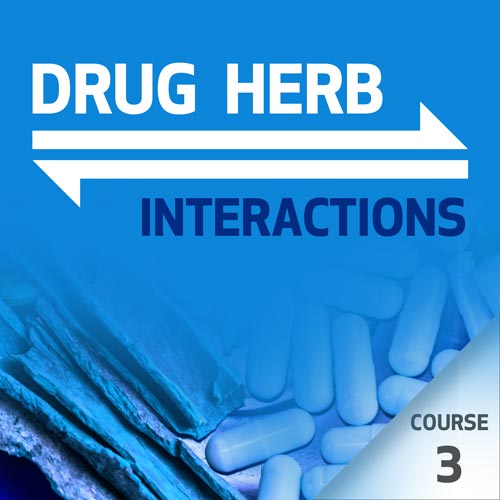

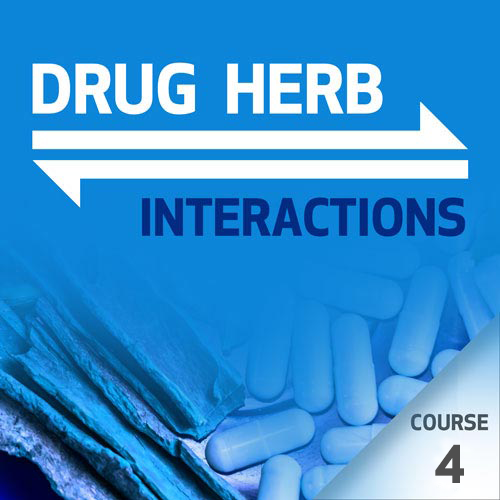

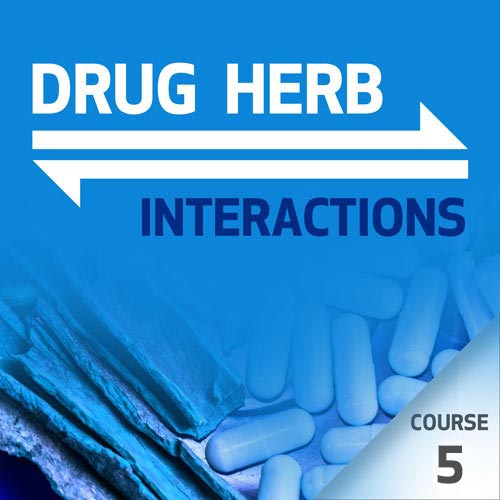

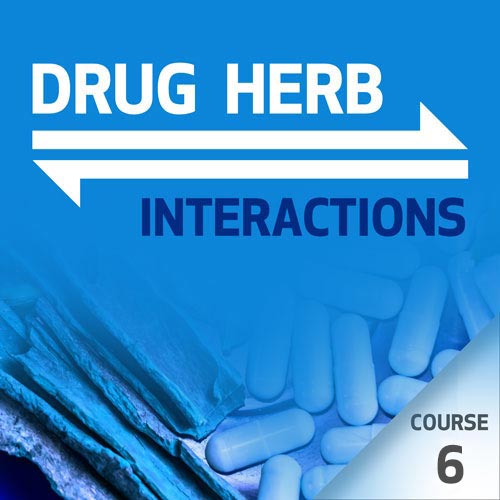

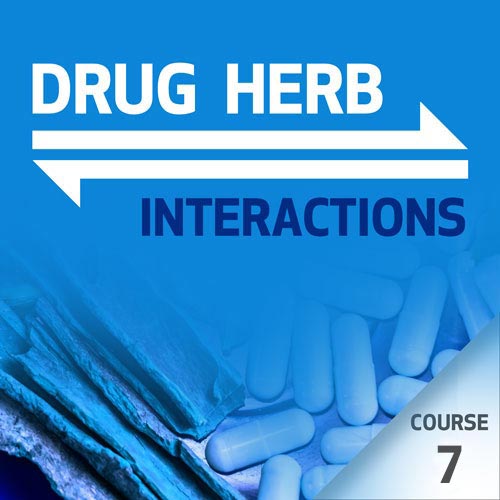

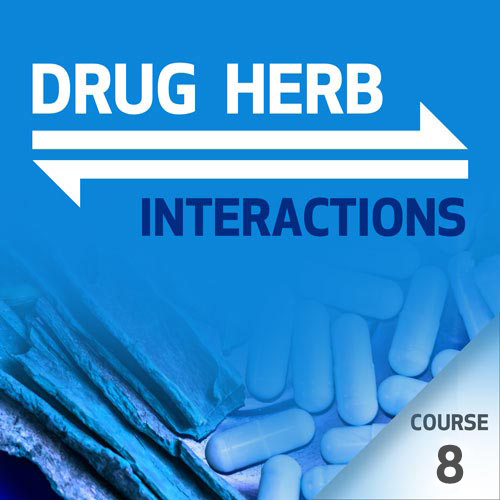

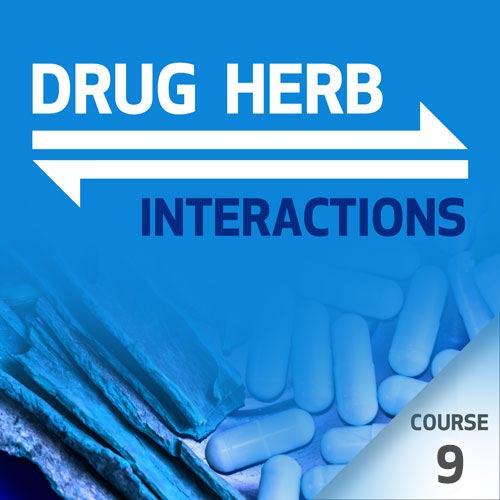

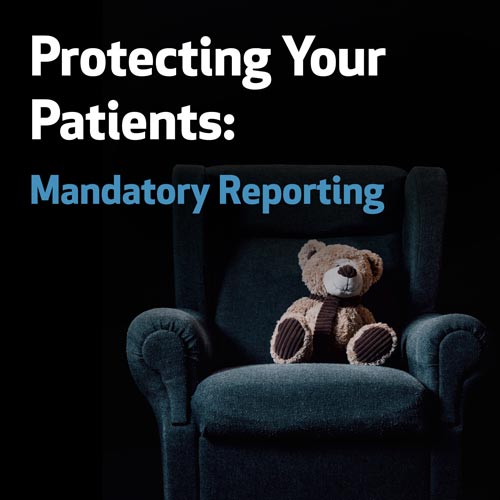



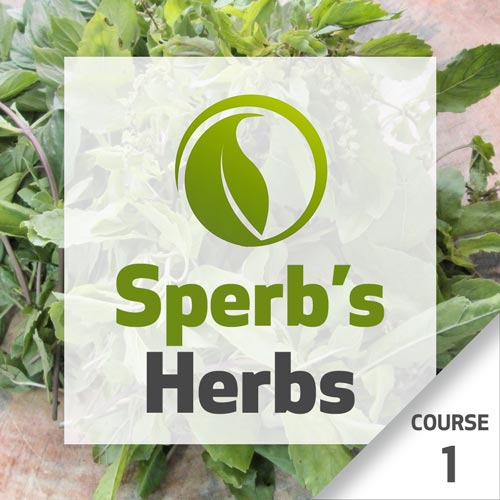

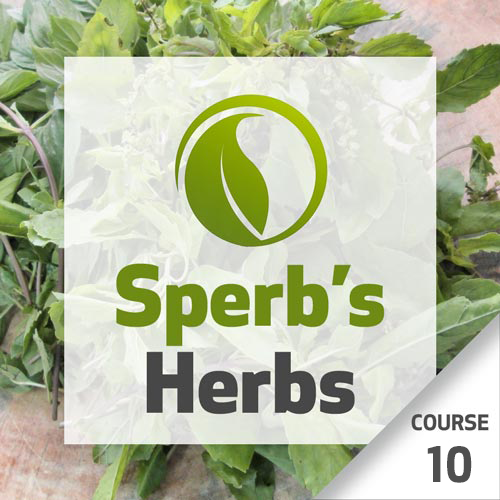

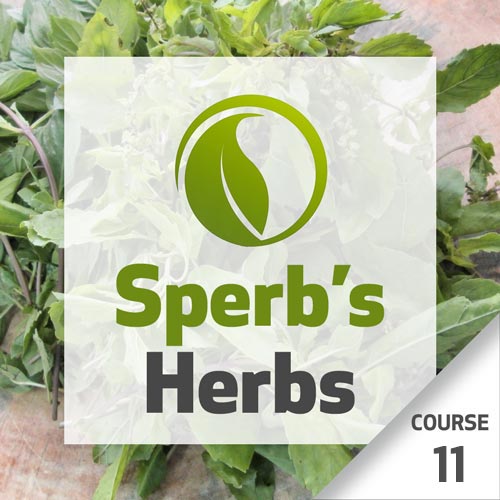

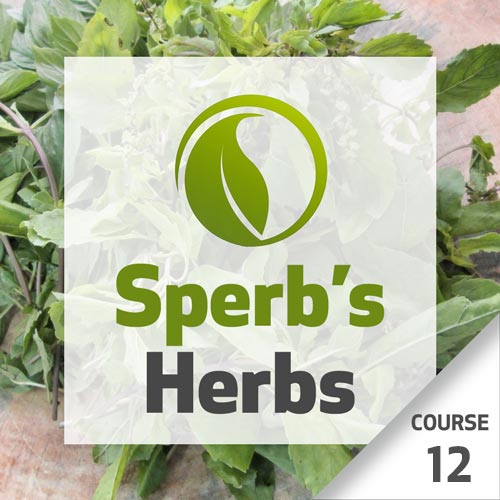

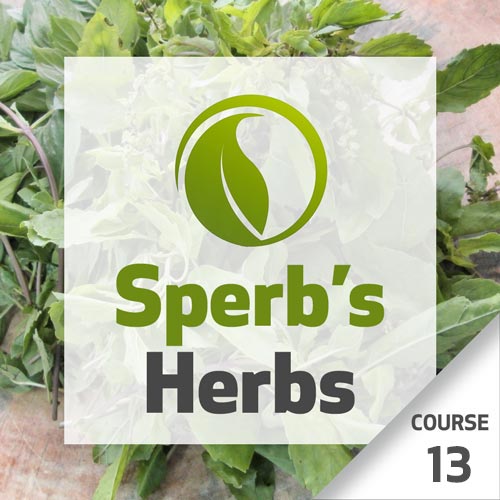

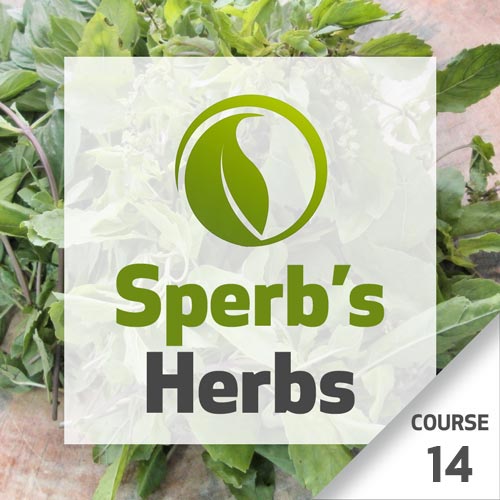

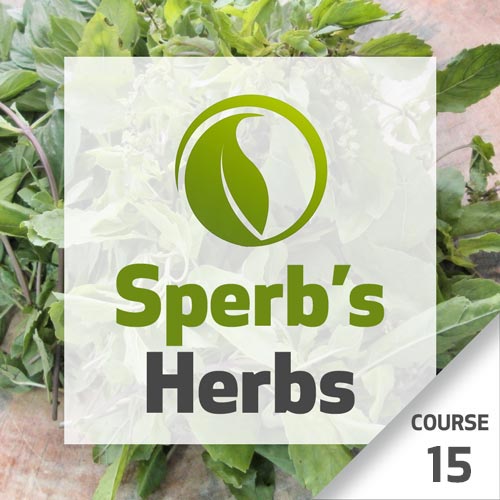

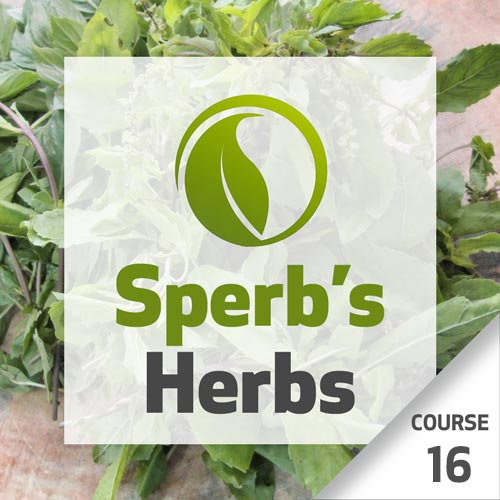

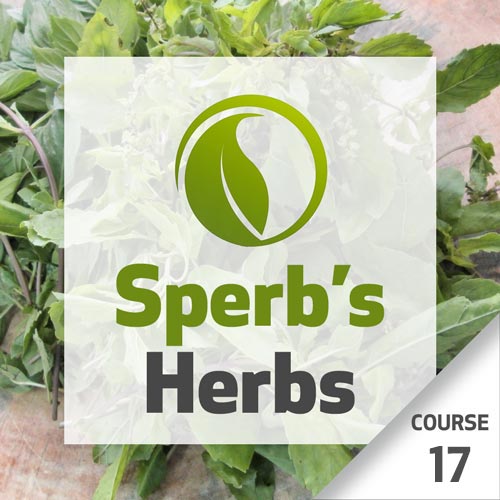

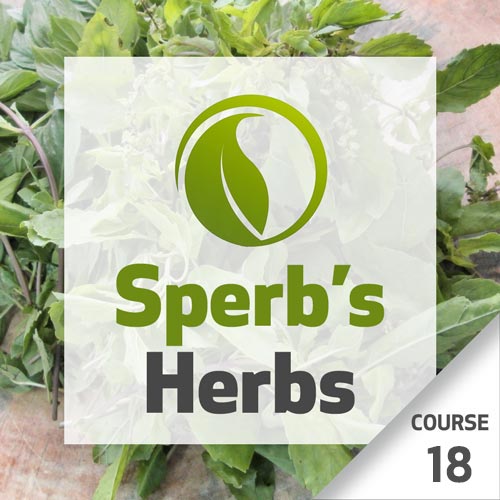

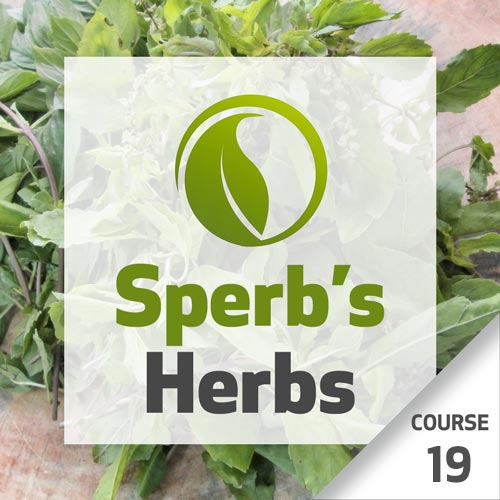

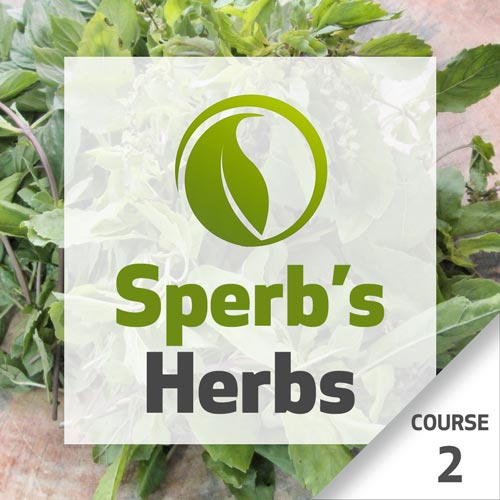

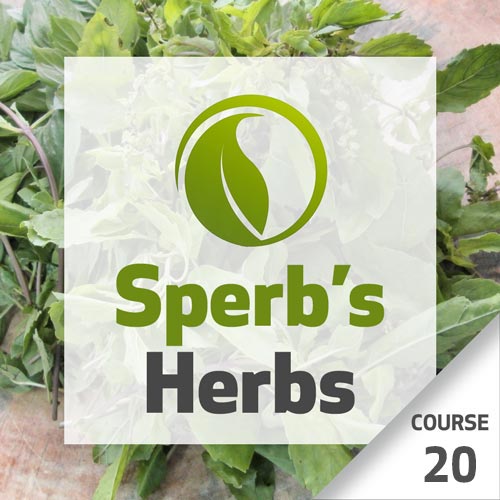

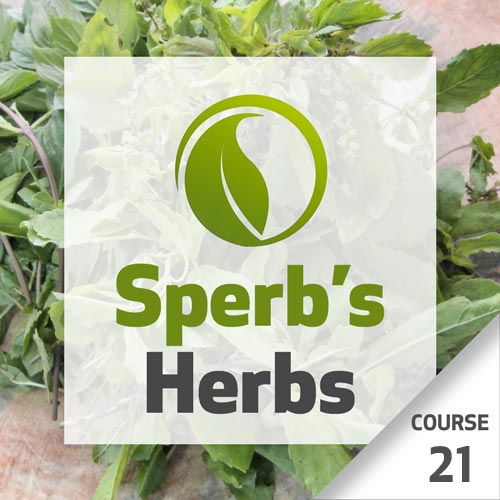

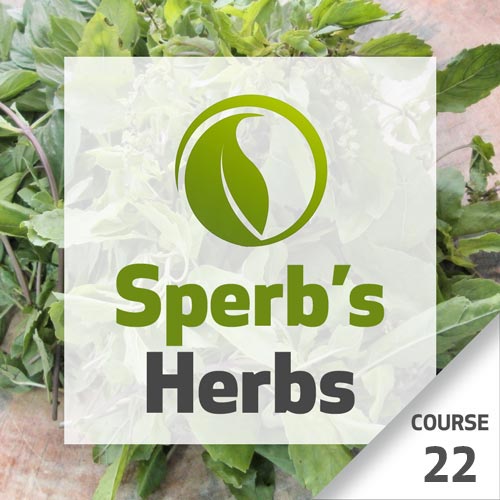

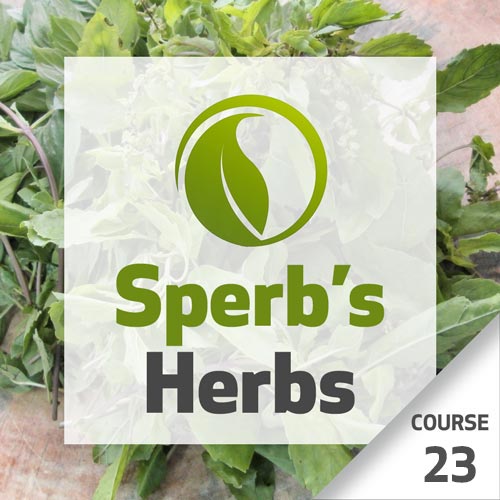

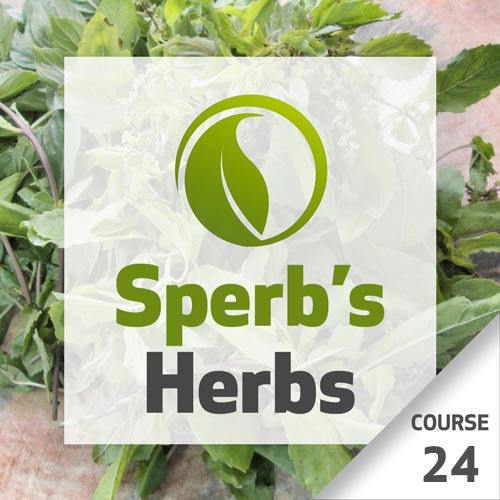

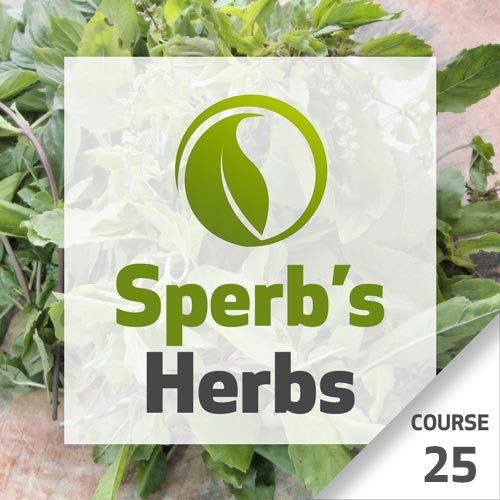



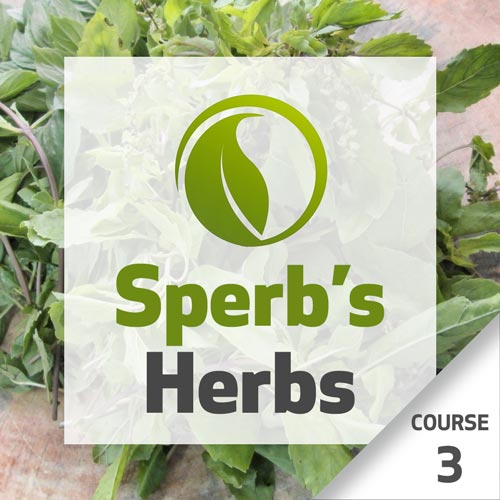

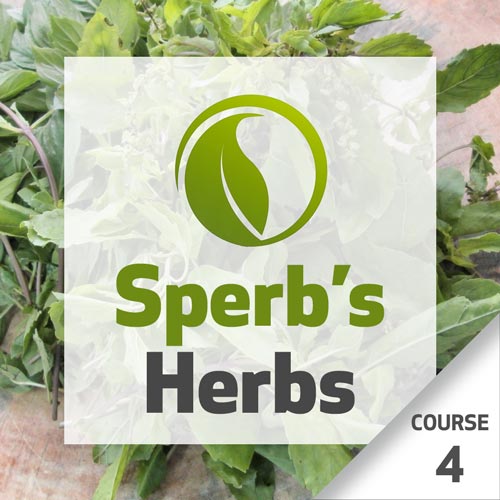

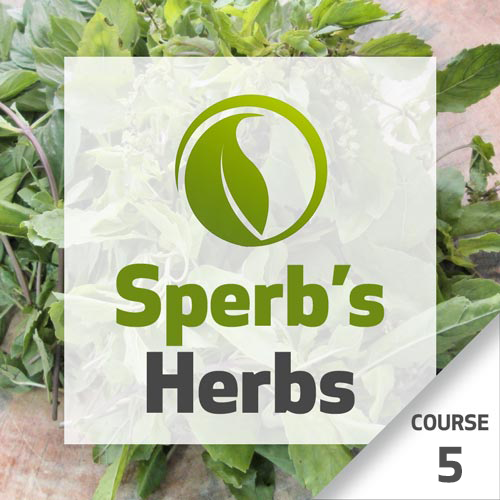

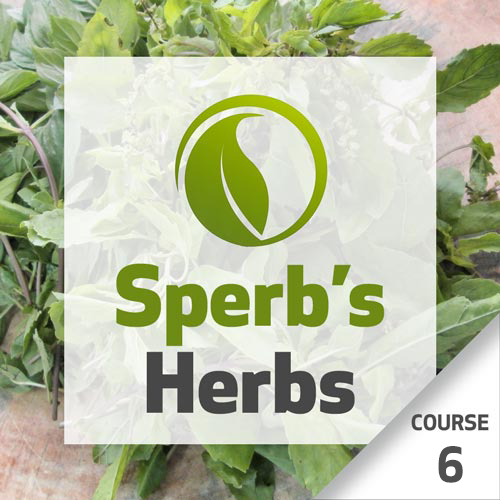

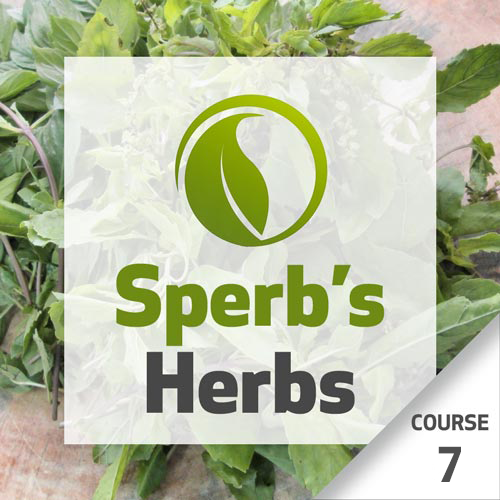

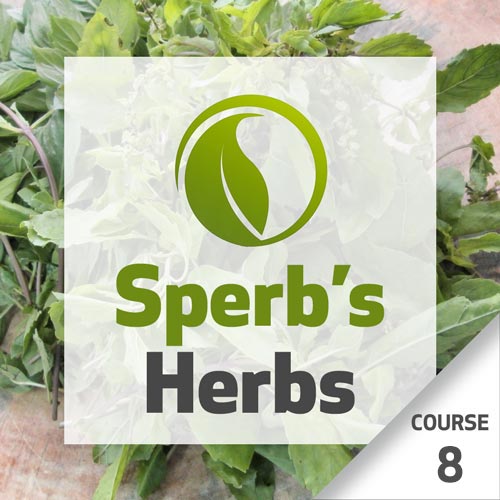

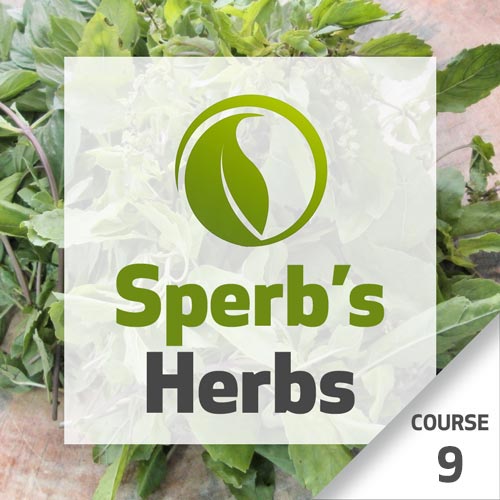

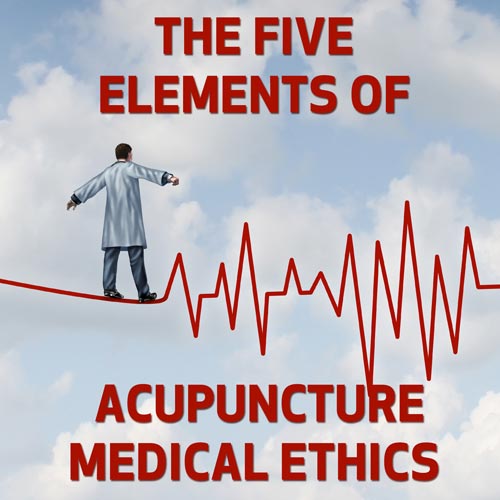

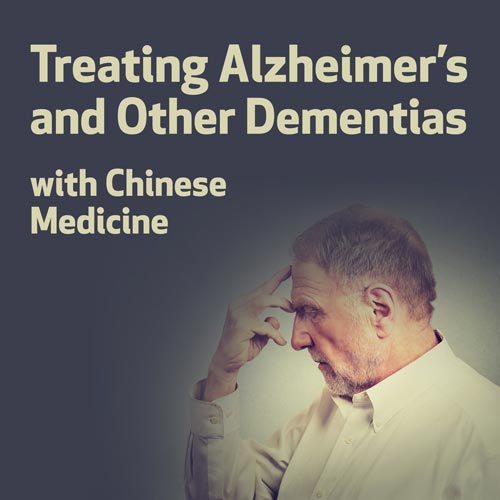

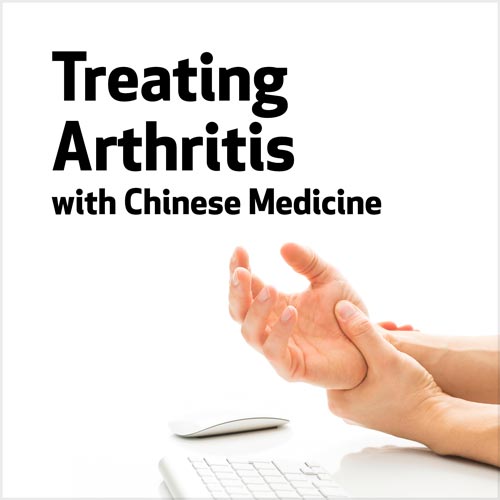



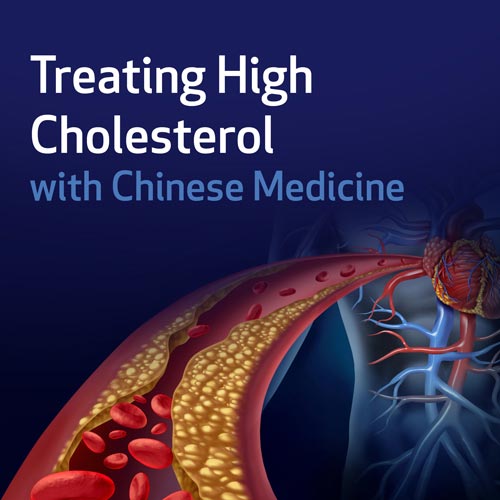

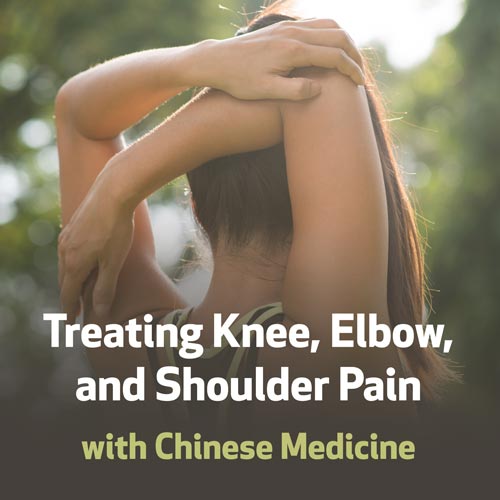



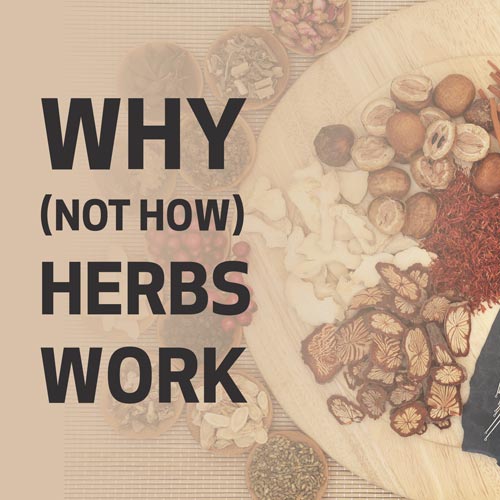

Overview
We should be empowering our patients to help themselves. What better way to do that than give them info for having Chinese herbal formulas in their medicine cabinet to help with minor medical conditions. In this course, we will look at relatively easy to find prepared herbal medicines everyone should have in their medical cabinet. We will discuss the conditions they treat, how to use them, and any cautions. As a bonus, each participant will receive a free copy of the upcoming ebook (when available): "Dragons in the Medicine Cabinet, Chinese Herbal Medicines Everyone Should Have at Home."
Conditions covered include, but are not limited to, colds, bleeding, burns, digestive complaints, headaches, and sinusitis.
Learning Objectives
- Comprehend the cautions and contraindications of the discussed medicinals.
- Communicate with their patients about commonly used Chinese herbal preparations.
- Understand Chinese herbal preparations used in first aid and common medical conditions.
Your Teacher

Greg Sperber
Dr. Greg Sperber is an author and also holds a Masters and Doctor of Acupuncture and Oriental Medicine from Pacific College of Oriental Medicine. He is a professor at PCOM and speaks internationally on TCM business and drug-herb interactions.
Categories
Tags
Drug-Herb Interactions - Course 10
Gastrointestinal Drugs and Chinese Medicine
with Greg Sperber
See In StoreOverview
While there are serious diseases that affect the gastrointestinal tract, such as irritable bowel syndrome and inflammatory bowel disease, there are also common conditions that most will experience at some point and need some help.
These include constipation, excessive gas, diarrhea, and nausea and vomiting (both idiopathic and anticancer drug induced). This seminar will examine drugs to help treat each of these conditions including drug functions, mechanisms of actions, adverse drug reactions, red flags, and herb-drug and acupuncture-drug interactions for each type of drug.
Learning Objectives
- Identify the most common gastrointestinal drugs with potential for drug-herb interactions.
- Understand how gastrointestinal drugs and herbs interact.
- Explore how major gastrointestinal drugs act on the body.
- Protect oneself from potential medico-legal issues arising from interactions.
Your Teacher

Greg Sperber
Dr. Greg Sperber is an author and also holds a Masters and Doctor of Acupuncture and Oriental Medicine from Pacific College of Oriental Medicine. He is a professor at PCOM and speaks internationally on TCM business and drug-herb interactions.
Categories
Tags
Drug-Herb Interactions - Course 11
Antibacterial Drugs and Chinese Medicine
with Greg Sperber
See In StoreOverview
Antibacterial drugs are a major contributor to the massive increase in lifespan during the twentieth century. They have also been incredibly controversial. Paradoxically being some of the safest drugs in the entire pharmacopeia and causing life-threatening allergies, secondary infections, and resistance.
This is a fascinating category of drugs that are widely used by our patients with lots of implications and interactions with Chinese medicine. This seminar examines this class of drugs and, by necessity, discusses various types of bacteria. Within each class of antibacterials, we will look at other functions, red flag issues, mechanisms of action, adverse effects, and any potential interactions.
Chinese medical practitioners often have very strong feelings about antibiotics, this course will challenge and support a lot of commonly held beliefs and help us be better practitioners for our patients.
Learning Objectives
- Understand the basics of bacterial microbiology.
- Understand how antibacterial drugs and herbs interact.
- Identify the most common antibacterial drugs with potential for drug-herb interactions.
- Protect oneself from potential medico-legal issues arising from interactions.
- Explore how major antibacterial drugs act on the body.
Your Teacher

Greg Sperber
Dr. Greg Sperber is an author and also holds a Masters and Doctor of Acupuncture and Oriental Medicine from Pacific College of Oriental Medicine. He is a professor at PCOM and speaks internationally on TCM business and drug-herb interactions.
Categories
Tags
Drug-Herb Interactions - Course 12
Other Antimicrobial Drugs and Chinese Medicine
with Greg Sperber
See In StoreOverview
This seminar will spend quite a bit of time discussing antivirals used to treat human immunodeficiency virus (HIV), coronavirus, herpes, respiratory syncytial virus (RSV), and some hepatitises. Additionally, antifungal, antiprotozoal, and anthelminthic (anti-worm) agents will be discussed. These discussions will, by necessity, also include life cycles of many of these of these pathogens. Within each type of agent, we will examine functions, red flag issues, mechanisms of action, adverse effects, and any potential interactions. This will be a fascinating exploration of some frequently treated conditions by Chinese medical practitioners as well as some that are quite uncommon. They may be uncommon, but they are still very interesting.
Learning Objectives
- Understand the basics of microbial biology.
- Explore how major antimicrobial drugs act on the body.
- Understand how antimicrobial drugs and herbs interact.
- Protect oneself from potential medico-legal issues arising from interactions.
- Identify the most common antimicrobial drugs with potential for drug-herb interactions.
Your Teacher

Greg Sperber
Dr. Greg Sperber is an author and also holds a Masters and Doctor of Acupuncture and Oriental Medicine from Pacific College of Oriental Medicine. He is a professor at PCOM and speaks internationally on TCM business and drug-herb interactions.
Categories
Tags
Drug-Herb Interactions - Course 13
Anti-Cancer Drugs and Chinese Medicine
with Greg Sperber
See In StoreOverview
Anti-Cancer Drugs as a group of drugs are more commonly used than we would like. But cancer is not a singular disease and is actually thousands of very different diseases with only one thing in common: unregulated and malignant cell growth. Just as there are so many cancers, there are a lot of different agents to combat them. This seminar will look at classes of anti-cancer drugs: alkylating agents, antimetabolites, antibiotics, microtubule inhibitors, steroid hormones and their antagonists, monoclonal antibodies, tyrosine kinase inhibitors, and other anti-cancer agents. We will look at what they do and how they do it, as well as the dangers Chinese medical practitioners need to be aware of when combining with herbs and acupuncture. This is a must review seminar for anyone who has cancer patients in their practice.
Learning Objectives
- Protect oneself from potential medico-legal issues arising from interactions.
- Understand how anti-cancer drugs and herbs interact.
- Explore how major anti-cancer drugs act on the body.
- Identify the most common anti-cancer drugs with potential for drug-herb interactions.
Your Teacher

Greg Sperber
Dr. Greg Sperber is an author and also holds a Masters and Doctor of Acupuncture and Oriental Medicine from Pacific College of Oriental Medicine. He is a professor at PCOM and speaks internationally on TCM business and drug-herb interactions.
Categories
Tags
Drug-Herb Interactions - Course 14
Anti-Inflammatory Drugs and Chinese Medicine
with Greg Sperber
See In StoreOverview
Anti-inflammatory drugs are commonly prescribed to our patients. And there is probably no drug more widely used among our patient population, when you consider over-the-counter use. This seminar explores this class of drugs including non-steroidal anti-inflammatory drugs (NSAIDs), other analgesics, disease-modifying antirheumatic drugs (DMARDs), migraine drugs, and drugs to treat gout and ulcerative colitis. Join us as we look at the uses, mechanisms of action, cautions, and potential interactions of these agents.
Learning Objectives
- Understand how Anti-Inflammatory drugs and herbs interact.
- Identify the most common Anti-Inflammatory drugs with potential for drug-herb interactions.
- Protect oneself from potential medico-legal issues arising from interactions.
- Explore how major Anti-Inflammatory drugs act on the body.
Your Teacher

Greg Sperber
Dr. Greg Sperber is an author and also holds a Masters and Doctor of Acupuncture and Oriental Medicine from Pacific College of Oriental Medicine. He is a professor at PCOM and speaks internationally on TCM business and drug-herb interactions.
Categories
Tags
Drug-Herb Interactions - Course 15
Miscellaneous Drugs and Chinese Medicine
with Greg Sperber
See In StoreOverview
An eclectic group of drugs await us as we explore miscellaneous drugs and how they interact with Chinese medicine. We will look at erectile dysfunction, osteoporosis, immunosuppressive, obesity, and acne drugs, skeletal muscle relaxants, and aids for smoking cessation. Join us as we look at the uses, mechanisms of action, cautions, and potential interactions of these agents.
Learning Objectives
- Understand how miscellaneous drugs and herbs interact
- Explore how major miscellaneous drugs act on the body
- Identify the most common miscellaneous drugs with potential for drug-herb interactions
- Protect oneself from potential medico-legal issues arising from interactions
Your Teacher

Greg Sperber
Dr. Greg Sperber is an author and also holds a Masters and Doctor of Acupuncture and Oriental Medicine from Pacific College of Oriental Medicine. He is a professor at PCOM and speaks internationally on TCM business and drug-herb interactions.
Categories
Tags
Drug-Herb Interactions - Course 3
Autonomic Nervous System Drugs and Chinese Medicine
with Greg Sperber
See In StoreOverview
Autonomic Nervous System (ANS) drugs as a class are varied in their effects and often used by patients of acupuncturists and Chinese medical practitioners. They also have serious adverse effects, drug-herb interactions, as well as interference with Chinese diagnostics. This seminar examines major ANS drugs and the dangers Chinese medical practitioners need to be aware of when combining with herbs and acupuncture. We will look at various types of biomedical treatments for Alzheimers and other dementias, Parkinson's disease, irritable bowel syndrome, asthma, hypo- and hypertension, benign prostatic hyperplasia, and other conditions. Herb-drug and acupuncture-drug interactions will be explored for each type of drug.
Learning Objectives
- Identify the most common autonomic nervous system drugs with potential for drug-herb interactions
- Explore how major autonomic nervous system drugs act on the body
- Understand how autonomic nervous system drugs and herbs interact
Your Teacher

Greg Sperber
Dr. Greg Sperber is an author and also holds a Masters and Doctor of Acupuncture and Oriental Medicine from Pacific College of Oriental Medicine. He is a professor at PCOM and speaks internationally on TCM business and drug-herb interactions.
Categories
Tags
Drug-Herb Interactions - Course 4
Psychiatric Drugs and Chinese Medicine
with Greg Sperber
See In StoreOverview
Psychiatric drugs as a class are very commonly used in the general population and by patients of acupuncturists and Chinese medical practitioners. They also have serious adverse effects, potential addiction, and drug-herb interactions. This seminar examines major psychiatric drugs and the dangers Chinese medical practitioners need to be aware of when combining with herbs and acupuncture. We will look at various types of biomedical treatments for depression, anxiety, schizophrenia, and mania. Herb-drug and acupuncture-drug interactions will be explored for each type of drug.
Learning Objectives
- Identify the most common psychiatric drugs with potential for drug-herb interactions.
- Protect oneself from potential medico-legal issues arising from interactions.
- Explore how major psychiatric drugs act on the body.
- Understand how psychiatric drugs and herbs interact.
Your Teacher

Greg Sperber
Dr. Greg Sperber is an author and also holds a Masters and Doctor of Acupuncture and Oriental Medicine from Pacific College of Oriental Medicine. He is a professor at PCOM and speaks internationally on TCM business and drug-herb interactions.
Categories
Tags
Drug-Herb Interactions - Course 5
Central Nervous System Drugs and Chinese Medicine
with Greg Sperber
See In StoreOverview
Central Nervous System (CNS) drugs as a class have profound effects and are very commonly used by patients of acupuncturists and Chinese medical practitioners. They also have serious adverse effects, drug-herb interactions, as well as potential interference with Chinese diagnostics. This seminar examines major CNS drugs and the dangers Chinese medical practitioners need to be aware of when combining with herbs and acupuncture. We will look at various types of biomedical treatments for Parkinson's disease, other neurodegenerative conditions, insomnia, epilepsy, as well as CNS stimulants and opioid drugs. Herb-drug and acupuncture-drug interactions will be explored for each type of drug.
Learning Objectives
- Identify the most common central nervous system drugs with potential for drug-herb interactions.
- Explore how major central nervous system drugs act on the body.
- Understand how central nervous system drugs and herbs interact.
Your Teacher

Greg Sperber
Dr. Greg Sperber is an author and also holds a Masters and Doctor of Acupuncture and Oriental Medicine from Pacific College of Oriental Medicine. He is a professor at PCOM and speaks internationally on TCM business and drug-herb interactions.
Categories
Tags
Overview
Cardiac drugs as a class are the most commonly prescribed drugs in the US. Lipitor, a statin drug to treat cholesterol is the most commonly prescribed drug. Several hypertension drugs are also in the top ten prescribed. This seminar examines major cardiac drugs and the dangers Chinese medical practitioners need to be aware of when combining with herbs and acupuncture.
We will look at various types of biomedical treatments for hypertension, arrhythmia, high cholesterol, and coagulative states. Herb-drug acupuncture-drug interactions will be explored for each type of drug. Each of the following drug classes will be explored: antihypertensive agents, anti-hyperlipidemic agents, anti-arrhythmics, and anticoagulants.
Learning Objectives
- Explore how major cardiac drugs act on the body.
- Understand how cardiac drugs and herbs interact.
- Protect oneself from potential medico-legal issues arising from interactions.
- Identify the most common cardiac drugs with potential for drug-herb interactions.
Your Teacher

Greg Sperber
Dr. Greg Sperber is an author and also holds a Masters and Doctor of Acupuncture and Oriental Medicine from Pacific College of Oriental Medicine. He is a professor at PCOM and speaks internationally on TCM business and drug-herb interactions.
Categories
Tags
Drug-Herb Interactions - Course 7
Sex Hormones and Reproductive Aids and Chinese Medicine
with Greg Sperber
See In StoreOverview
Chinese medicine is often used to help menstrual, menopausal, contraceptive, and reproductive medical conditions. In addition, several of the drugs used as sex hormones or anti-hormones are used to treat various cancers and other conditions. This seminar examines sex hormones and reproductive aids and the dangers Chinese medical practitioners need to be aware of when combining with herbs and acupuncture. We will look at various types of drugs including androgens, anti-androgens, estrogens, progestins, anti-progestins, as well as selective estrogen receptor modulators and various reproductive aids. Herb-drug and acupuncture-drug interactions will be explored for each type of drug. If you treat various hormonal cancers, severe hormonal conditions, and/or reproductive medicine, this is a must attend seminar.
Learning Objectives
- Identify the most common Sex Hormones with potential for drug-herb interactions.
- Protect oneself from potential medico-legal issues arising from interactions.
- Understand how Sex Hormones and herbs interact.
- Explore how major Sex Hormones act on the body.
Your Teacher

Greg Sperber
Dr. Greg Sperber is an author and also holds a Masters and Doctor of Acupuncture and Oriental Medicine from Pacific College of Oriental Medicine. He is a professor at PCOM and speaks internationally on TCM business and drug-herb interactions.
Categories
Tags
Drug-Herb Interactions - Course 8
Endocrine Drugs and Chinese Medicine
with Greg Sperber
See In StoreOverview
This seminar explores drugs used to treat several common conditions in the population and in acupuncturist offices. These include thyroid conditions, diabetes (both type I and II), as well as auto-immune and inflammatory conditions. In addition to drugs to treat these conditions, we will also be exploring drugs used to treat the pituitary and inhibitors of adrenocorticoids. After a review of the hypothalamus and pituitary and their hormones, each of the endocrine organs and their hormones will be examined for practical implications in modern medicine. Herb-drug and acupuncture-drug interactions will be explored for each type of drug. If you treat any of these conditions, and/or tumors and cancers affecting the thyroid, pituitary, or adrenals, this is a must attend seminar.
Learning Objectives
- Explore how major endocrine drugs act on the body.
- Understand how endocrine drugs and herbs interact.
- Protect oneself from potential medico-legal issues arising from interactions.
- Identify the most common endocrine drugs with potential for drug-herb interactions.
Your Teacher

Greg Sperber
Dr. Greg Sperber is an author and also holds a Masters and Doctor of Acupuncture and Oriental Medicine from Pacific College of Oriental Medicine. He is a professor at PCOM and speaks internationally on TCM business and drug-herb interactions.
Categories
Tags
Drug-Herb Interactions - Course 9
Respiratory Drugs and Chinese Medicine
with Greg Sperber
See In StoreOverview
Asthma is one of the most common conditions in the population. Chronic Obstructive Pulmonary Disease (COPD) is the third leading cause of death in the United States. Add in allergies and the common cold and flu, and it is practically impossible to avoid patients who are or will be on drugs to treat these conditions. This seminar will examine drugs to treat respiratory diseases including those listed here as well as antitussives and expectorants. We will be exploring these diseases in addition to the drug functions, mechanisms of actions, adverse drug reactions, red flags, and herb-drug and acupuncture-drug interactions for each type of drug. Join us for this informative and relevant seminar.
Learning Objectives
- Identify the most common respiratory drugs with potential for drug-herb interactions.
- Protect oneself from potential medico-legal issues arising from interactions.
- Understand how respiratory drugs and herbs interact.
- Explore how major respiratory drugs act on the body.
Your Teacher

Greg Sperber
Dr. Greg Sperber is an author and also holds a Masters and Doctor of Acupuncture and Oriental Medicine from Pacific College of Oriental Medicine. He is a professor at PCOM and speaks internationally on TCM business and drug-herb interactions.
Categories
Tags
Overview
There is an ethical and legal responsibility for healthcare practitioners to report certain things. While each state may mandate different things, especially for acupuncturists, there are several areas covered by mandatory reporting laws including diseases, child and elder abuse, and suicide and harm to others. This course looks at the roles and responsibilities of acupuncturists and how to proceed with a report. It will also answer questions such as: Are there any risks to reporting? Can my patients sue me? What if I am wrong? If you are in practice and see any children, elderly, or potentially mentally ill, this course is incredibly important, not only to protect yourself, but to protect your patients.
Learning Objectives
- Understand the rationale and responsibilities of healthcare providers in regard to mandatory reporting
- Appraise the risk factors and necessity for mandatory reporting
- Classify the different types of mandatory reporting
Your Teacher

Greg Sperber
Dr. Greg Sperber is an author and also holds a Masters and Doctor of Acupuncture and Oriental Medicine from Pacific College of Oriental Medicine. He is a professor at PCOM and speaks internationally on TCM business and drug-herb interactions.
Categories
Tags
Overview
This course looks at how to do a proper chart and examines some of the common mistakes made when charting. Based on the instructors experience with medical charting and over 12 years of clinical supervising, seeing all the mistakes and studying what makes a great chart. In addition, this course will discuss medicolegal aspects of SOAP notes as well as the SOAPE note. This course is a must take for anyone who wishes to protect themselves legally as well give the best care to their patients.
Learning Objectives
- Employ the SOAP and SOAPE style of charting
- Avoid common errors in charting
- Identify medicolegal aspects of proper charting and the consequences of improper charting
Your Teacher

Greg Sperber
Dr. Greg Sperber is an author and also holds a Masters and Doctor of Acupuncture and Oriental Medicine from Pacific College of Oriental Medicine. He is a professor at PCOM and speaks internationally on TCM business and drug-herb interactions.
Categories
Tags
Sperb's Herbs - Course 1
Gou Qi Zi (Goji)
with Greg Sperber
Overview
This is an exciting episode of the Sperb's Herbs, Chinese Singles podcast. This episode covers the Chinese herb gou qi zi, commonly known as Goji. Each episode of the podcast will go into great depth about a single herb. Besides covering the basics of Chinese herbology including category, and functions, we will explore the history, quality, science, pharmacology, evidence, and any potential interactions of each herb. And then there is always something a little quirky about an episode. Whether that is a unique story or an interesting perspective, there will always be something different to learn about episode's herb.
Learning Objectives
- Understand and prevent any potential drug-herb interactions
- Converse about the current scientific evidence about the uses, dangers, and effectiveness of Gou Qi Zi (Goji)
- Comprehend basic Chinese and bio- medical information about Gou Qi Zi (Goji)
- Understand the history of Gou Qi Zi (Goji), especially in the context of the Chinese classics
Your Teacher

Greg Sperber
Dr. Greg Sperber is an author and also holds a Masters and Doctor of Acupuncture and Oriental Medicine from Pacific College of Oriental Medicine. He is a professor at PCOM and speaks internationally on TCM business and drug-herb interactions.
Category
Tags
Sperb's Herbs - Course 10
Da Suan (Garlic)
with Greg Sperber
Overview
Garlic is a wonderful culinary herb. But it is also a useful Chinese herb. This episode goes into the medicinal qualities of garlic from a scientific and Chinese point of view. Also we will, as something a little different, discuss black garlic both as a wonderfully similar yet different addition to our recipes, as well as an examination of its herbal properties. Does garlic live up to its hype? Or is it an herbal dud? At least, nothing can change its wonderful flavor!
Every other week an exciting new episode of the Sperb's Herbs podcast is recorded. Each episode covers another Chinese herb and will go into great depth about it. Besides covering the basics of Chinese herbology including category, and functions, we will explore the history, quality, science, pharmacology, evidence, and any potential interactions of each herb. And then there is always something a little quirky about an episode. Whether that is a unique story or an interesting perspective, there will always be something different to learn about episode's herb.
Learning Objectives
- Converse about the current scientific evidence about the uses, dangers, and effectiveness of Da Suan (Garlic).
- Understand and prevent any potential drug-herb interactions.
- Comprehend basic Chinese and bio- medical information about Da Suan (Garlic).
- Understand the history of Da Suan (Garlic), especially in the context of the Chinese classics.
Your Teacher

Greg Sperber
Dr. Greg Sperber is an author and also holds a Masters and Doctor of Acupuncture and Oriental Medicine from Pacific College of Oriental Medicine. He is a professor at PCOM and speaks internationally on TCM business and drug-herb interactions.
Categories
Tags
Sperb's Herbs - Course 11
Devil’s claw
with Greg Sperber
Overview
Devil’s claw is our first herb from Africa. It is supposed to help aches and pains, joints, and digestive complaints among many other uses. We will be looking at the history of this herb, what it is supposed to treat, and the science behind it. And for something a little different, we will be looking at sustainability of herbs in the world. I was actually quite surprised by this herb and it will probably change how I recommend herbs to many of my patients. Find out why…
Every other week an exciting new episode of the Sperb’s Herbs podcast is recorded. Each episode covers another Chinese or world herb or formula and will go into great depth about it. Besides covering the basics of Chinese herbology including category, and functions, we will explore the history, quality, science, pharmacology, evidence, and any potential interactions of each herb. And then there is always something a little quirky about an episode. Whether that is a unique story or an interesting perspective, there will always be something different to learn about each episode’s herb.
Learning Objectives
- Understand the history of Devil’s Claw, especially in the context of its tradition and its modern discovery.
- Understand and prevent any potential drug-herb interactions.
- Comprehend basic, traditional, and bio- medical information about Devil’s Claw.
- Converse about the current scientific evidence about the uses, dangers, and effectiveness of Devil’s Claw.
Your Teacher

Greg Sperber
Dr. Greg Sperber is an author and also holds a Masters and Doctor of Acupuncture and Oriental Medicine from Pacific College of Oriental Medicine. He is a professor at PCOM and speaks internationally on TCM business and drug-herb interactions.
Category
Tags
Sperb's Herbs - Course 12
Melaleuca Cajuputi
with Greg Sperber
Overview
Melaleuca Cajuputi, commonly known as Paperbark, is an herb used by many Aboriginal people in Australia. Generally used for pain and congestion in respiratory infections, we will be looking at the traditional uses and modern science of this interesting herb as well as something fascinating about the cultures that use it. Dr. Sperber lived in Australia for four years and lived and worked with the Aboriginal peoples. He brings personal stories and insights into this culture. So join us for this fascinating journey to the herbs of Down Under…
Every two weeks, an exciting new episode of the Sperb's Herbs podcast is recorded. Each episode covers another traditional herb from somewhere in the world and will go into great depth about it. Besides covering the basics of the herb including its traditional use and functions, we will explore the history, quality, science, pharmacology, evidence, and any potential interactions of each herb. And then there is always something a little quirky about an episode. Whether that is a unique story or an interesting perspective, there will always be something different to learn about episode's herb.
Learning Objectives
- Comprehend basic, traditional, and bio- medical information about Melaleuca Cajuputi.
- Understand and prevent any potential drug-herb interactions.
- Converse about the current scientific evidence about the uses, dangers, and effectiveness of Melaleuca Cajuputi.
- Understand the history of Melaleuca Cajuputi, especially in the context of its tradition and its modern discovery.
Your Teacher
Sperb's Herbs - Course 13
Yi Guan Jian
with Greg Sperber
Overview
This week’s episode looks at an interesting formula in the nourish and tonify the yin category: yi guan jian or linking decoction. Widely used to help treat lots of different presentations, especially those associated with menopause or menses. We will be looking at the traditional uses and what the science says about them. As for something a little different, we will be exploring Confucianism, as the name of this formula is thought to be Confucian in origin. This episode should be a real corker…don’t miss it!
Every other week an exciting new episode of the Sperb’s Herbs podcast is recorded. Each episode covers another Chinese or world herb or formula and will go into great depth about it. Besides covering the basics of Chinese herbology including category, and functions, we will explore the history, quality, science, pharmacology, evidence, and any potential interactions of each herb. And then there is always something a little quirky about an episode. Whether that is a unique story or an interesting perspective, there will always be something different to learn about each episode’s herb.
Learning Objectives
- Comprehend basic Chinese and bio- medical information about Yi Guan Jian.
- Understand and prevent any potential drug-herb interactions.
- Understand the history of Yi Guan Jian, especially in the context of the Chinese classics.
- Converse about the current scientific evidence about the uses, dangers, and effectiveness of Yi Guan Jian.
Your Teacher

Greg Sperber
Dr. Greg Sperber is an author and also holds a Masters and Doctor of Acupuncture and Oriental Medicine from Pacific College of Oriental Medicine. He is a professor at PCOM and speaks internationally on TCM business and drug-herb interactions.
Category
Tags
Sperb's Herbs - Course 14
Ma Huang (Ephedra)
with Greg Sperber
Overview
Ma Huang is one of the most useful and absolutely the most controversial herbs in the entire Chinese herbal pharmacopeia. Why is it so important and why has it been banned in most developed nations? We will be exploring these questions as well as looking at the Dietary Supplement Health and Education Act of 1994 (DSHEA), which is the legal act allowing it to be banned in the United States. This is one of the most interesting episodes yet of Sperb’s Herbs. Don’t miss it!
Every other week an exciting new episode of the Sperb’s Herbs podcast is recorded. Each episode covers another Chinese or world herb or formula and will go into great depth about it. Besides covering the basics of Chinese herbology including category, and functions, we will explore the history, quality, science, pharmacology, evidence, and any potential interactions of each herb. And then there is always something a little quirky about an episode. Whether that is a unique story or an interesting perspective, there will always be something different to learn about each episode’s herb.
Learning Objectives
- Comprehend basic Chinese and bio- medical information about Ma Huang (Ephedra).
- Understand the history of Ma Huang (Ephedra), especially in the context of the Chinese classics.
- Understand and prevent any potential drug-herb interactions.
- Converse about the current scientific evidence about the uses, dangers, and effectiveness of Ma Huang (Ephedra).
Your Teacher

Greg Sperber
Dr. Greg Sperber is an author and also holds a Masters and Doctor of Acupuncture and Oriental Medicine from Pacific College of Oriental Medicine. He is a professor at PCOM and speaks internationally on TCM business and drug-herb interactions.
Category
Tags
Sperb's Herbs - Course 15
Hops
with Greg Sperber
Overview
Hops is a traditional European herb with some interesting uses. And it is a major ingredient in beer. This episode looks at both of these in depth and the science behind them. As a relative non-drinker, I was still fascinated with this exploration of beer. And the herb may have some interesting application to my patients. What more can ask for? So, get a frothy mug o’ beer and join us for this fascinating episode!
Learning Objectives
- Understand the history of Hops, especially in the context of its tradition and its modern discovery.
- Comprehend basic, traditional, and bio- medical information about Hops.
- Converse about the current scientific evidence about the uses, dangers, and effectiveness of Hops.
- Understand and prevent any potential drug-herb interactions.
Your Teacher

Greg Sperber
Dr. Greg Sperber is an author and also holds a Masters and Doctor of Acupuncture and Oriental Medicine from Pacific College of Oriental Medicine. He is a professor at PCOM and speaks internationally on TCM business and drug-herb interactions.
Category
Tags
Sperb's Herbs - Course 16
Bai Tou Weng
with Greg Sperber
Overview
The Chinese herb Bai Tou Weng (Pulsatilla) is not an A-lister, but it is a useful herb. This episode will cover what it does, its history, and the science and pharmacology behind it. Plus, as something a little different, we are going to discuss “toxins,” both from a modern alternative medicine perspective (spoiler alert: not a fan), and a Chinese medical approach. Some controversy is ahead, so buckle up and join us for a unique episode.
Each episode of the podcast will go into great depth about a single herb. Besides covering the basics of Chinese herbology including category, and functions, we will explore the history, quality, science, pharmacology, evidence, and any potential interactions of each herb. And then there is always something a little quirky about an episode. Whether that is a unique story or an interesting perspective, there will always be something different to learn about Bai Tou Weng (Pulsatilla).
Learning Objectives
- Understand and prevent any potential drug-herb interactions.
- Comprehend basic Chinese and bio- medical information about Bai Tou Weng (Pulsatilla).
- Converse about the current scientific evidence about the uses, dangers, and effectiveness of Bai Tou Weng (Pulsatilla).
- Understand the history of Bai Tou Weng (Pulsatilla), especially in the context of the Chinese classics.
Your Teacher

Greg Sperber
Dr. Greg Sperber is an author and also holds a Masters and Doctor of Acupuncture and Oriental Medicine from Pacific College of Oriental Medicine. He is a professor at PCOM and speaks internationally on TCM business and drug-herb interactions.
Category
Tags
Sperb's Herbs - Course 17
Cool and Release the Exterior Herbs
with Greg Sperber
Overview
This episode, we are exploring another important category of herbs: Herbs that Cool and Release the Exterior. These are incredibly useful especially treating colds, flus, and other “external attacks.” As “something a little different,” we will look at wen bring or warm disease theory and the Four Levels. Join us as we look at this category and learn about their functions, their usefulness, and their dangers.
Every other week an exciting new episode of the Sperb’s Herbs podcast is recorded. Each episode covers another Chinese or world herb or formula and will go into great depth about it. Besides covering the basics of Chinese herbology including category, and functions, we will explore the history, quality, science, pharmacology, evidence, and any potential interactions of each herb. And then there is always something a little quirky about an episode. Whether that is a unique story or an interesting perspective, there will always be something different to learn about each episode’s herb.
Learning Objectives
- Comprehend basic Chinese and bio- medical information about Herbs that Cool and Release the Exterior.
- Understand the differences between individual herbs in the Herbs that Cool and Release the Exterior category.
- Converse about current scientific evidence about the uses, dangers, and effectiveness of herbs in the differences between individual herbs in the Herbs that Cool and Release the Exterior category.
- Understand and prevent any potential drug-herb interactions.
Your Teacher

Greg Sperber
Dr. Greg Sperber is an author and also holds a Masters and Doctor of Acupuncture and Oriental Medicine from Pacific College of Oriental Medicine. He is a professor at PCOM and speaks internationally on TCM business and drug-herb interactions.
Category
Tags
Sperb's Herbs - Course 18
Gui Zhi (Cinnamon Twig)
with Greg Sperber
Overview
This is an exciting episode of the Sperb’s Herbs podcast. This episode covers the Chinese herb Gui Zhi(Cinnamon Twig). Each episode of the podcast will go into great depth about a single herb. Besides covering the basics of Chinese herbology including category, and functions, we will explore the history, quality, science, pharmacology, evidence, and any potential interactions of each herb. And then there is always something a little quirky about an episode. Whether that is a unique story or an interesting perspective, there will always be something different to learn about Gui Zhi (Cinnamon Twig).
Learning Objectives
- Understand the history of Gui Zhi (Cinnamon Twig), especially in the context of the Chinese classics.
- Comprehend basic Chinese and bio-medical information about Gui Zhi (Cinnamon Twig).
- Converse about the current scientific evidence about the uses, dangers, and effectiveness of Gui Zhi (Cinnamon Twig).
- Understand and prevent any potential drug-herb interactions.
Your Teacher

Greg Sperber
Dr. Greg Sperber is an author and also holds a Masters and Doctor of Acupuncture and Oriental Medicine from Pacific College of Oriental Medicine. He is a professor at PCOM and speaks internationally on TCM business and drug-herb interactions.
Category
Tags
Sperb's Herbs - Course 19
Cleome Arabica
with Greg Sperber
Overview
This is an exciting episode of the Sperb's Herbs podcast. This episode covers the herb Cleome Arabica as well as some of the culture around this herb. Each episode of the podcast will go into great depth about a single herb. Besides covering the basics of the herb including functions, we will explore the history, quality, science, pharmacology, evidence, and any potential interactions of each herb. And then there is always something a little quirky about an episode. In this episode we will be introducing Arab medicine and discussing the differences between Persia and Arabia. Join us as we learn about Cleome arabica.
Learning Objectives
- Understand the history of Cleome arabica, especially in the context of its tradition and its modern discovery.
- Comprehend basic, traditional, and bio- medical information about Cleome arabica.
- Understand and prevent any potential drug-herb interactions.
- Converse about the current scientific evidence about the uses, dangers, and effectiveness of Cleome arabica.
Your Teacher

Greg Sperber
Dr. Greg Sperber is an author and also holds a Masters and Doctor of Acupuncture and Oriental Medicine from Pacific College of Oriental Medicine. He is a professor at PCOM and speaks internationally on TCM business and drug-herb interactions.
Category
Tags
Sperb's Herbs - Course 2
Shi Quan Da Bu Tang
with Greg Sperber
Overview
This is an exciting episode of the Sperb's Herbs podcast. This episode covers the Chinese formula Shi Quan Da Bu Tang. Each episode of the podcast will go into great depth about herbs. Besides covering the basics of the formula including category, and functions of both the formula and the individual herbs in the formula, we will explore the history, science, pharmacology, evidence, and any potential interactions of each formula. And then there is always something a little quirky about an episode. Whether that is a unique story or an interesting perspective, there will always be something different to learn about episode's formula. This episode has an interview with master herbalist, Dr. Min Fan.
Learning Objectives
- Understand the history of Shi Quan Da Bu Tang, especially in the context of the Chinese classics
- Be able to converse about the current scientific evidence about the uses, dangers, and effectiveness of Shi Quan Da Bu Tang
- Understand and prevent any potential drug-herb interactions
- Comprehend basic Chinese and bio- medical information about Shi Quan Da Bu Tang
Your Teacher

Greg Sperber
Dr. Greg Sperber is an author and also holds a Masters and Doctor of Acupuncture and Oriental Medicine from Pacific College of Oriental Medicine. He is a professor at PCOM and speaks internationally on TCM business and drug-herb interactions.
Category
Tags
Sperb's Herbs - Course 20
Huang Lian (Coptis)
with Greg Sperber
Overview
This is an exciting episode of the Sperb’s Herbs podcast. This episode covers the Chinese herb Huang Lian(Coptis). Each episode of the podcast will go into great depth about a single herb. Besides covering the basics ofChinese herbology including category, and functions, we will explore the history, quality, science, pharmacology,evidence, and any potential interactions of each herb. And then there is always something a little quirky aboutan episode. Whether that is a unique story or an interesting perspective, there will always be something differentto learn about Huang Lian (Coptis).
Learning Objectives
- Understand and prevent any potential drug-herb interactions.
- Comprehend basic Chinese and bio- medical information about Huang Lian (Coptis).
- Converse about the current scientific evidence about the uses, dangers, and effectiveness of Huang Lian(Coptis).
- Understand the history of Huang Lian (Coptis), especially in the context of the Chinese classics.
Your Teacher

Greg Sperber
Dr. Greg Sperber is an author and also holds a Masters and Doctor of Acupuncture and Oriental Medicine from Pacific College of Oriental Medicine. He is a professor at PCOM and speaks internationally on TCM business and drug-herb interactions.
Category
Tags
Sperb's Herbs - Course 21
Si Wu Tang
with Greg Sperber
Overview
This is an exciting episode of the Sperb’s Herbs podcast. This episode covers the Chinese formula Si Wu Tang. Each episode of the podcast will go into great depth about a single formula. Besides covering the basics of theformula including category, and functions of both the formula and the individual herbs in the formula, we willexplore the history, science, pharmacology, evidence, and any potential interactions of each formula. And thenthere is always something a little quirky about an episode. This episode we will look at skepticism both as aphilosophical construct but also specifically in regards to Chinese medicine. Readily heady stuff you won’t wantto miss…
Learning Objectives
- Converse about the current scientific evidence about the uses, dangers, and effectiveness of Si Wu Tang.
- Understand the history of Si Wu Tang, especially in the context of the Chinese classics.
- Comprehend basic Chinese and bio- medical information about Si Wu Tang.
- Understand and prevent any potential drug-herb interactions.
Your Teacher

Greg Sperber
Dr. Greg Sperber is an author and also holds a Masters and Doctor of Acupuncture and Oriental Medicine from Pacific College of Oriental Medicine. He is a professor at PCOM and speaks internationally on TCM business and drug-herb interactions.
Category
Tags
Sperb's Herbs - Course 22
Zi Su Geng
with Greg Sperber
Overview
This is an exciting episode of the Sperb’s Herbs podcast. This episode covers the Chinese herb Zi Su Geng(Perilla Stem). Each episode of the podcast will go into great depth about a single herb. Besides covering thebasics of Chinese herbology including category, and functions, we will explore the history, quality, science,pharmacology, evidence, and any potential interactions of each herb. And then there is always something a littlequirky about an episode. Whether that is a unique story or an interesting perspective, there will always besomething different to learn about Zi Su Geng (Perilla Stem).
Learning Objectives
- Understand and prevent any potential drug-herb interactions.
- Converse about the current scientific evidence about the uses, dangers, and effectiveness of Zi Su Geng(Perilla Stem).
- Understand the history of Zi Su Geng (Perilla Stem), especially in the context of the Chinese classics.
- Comprehend basic Chinese and bio- medical information about Zi Su Geng (Perilla Stem).
Your Teacher

Greg Sperber
Dr. Greg Sperber is an author and also holds a Masters and Doctor of Acupuncture and Oriental Medicine from Pacific College of Oriental Medicine. He is a professor at PCOM and speaks internationally on TCM business and drug-herb interactions.
Category
Tags
Sperb's Herbs - Course 23
Triphala
with Greg Sperber
Overview
This is an exciting episode of the Sperb’s Herbs podcast. This episode covers the three herb Triphala. Each episode covers another traditional herb from somewhere in the world and will go into great depth about it. Besides covering the basics of the herb including its traditional use and functions, we will explore the history, quality, science, pharmacology, evidence, and any potential interactions of each herb. And then there is always something a little quirky about an episode. Whether that is a unique story or an interesting perspective, there will always be something different to learn about episode’s herb.
Learning Objectives
- Comprehend basic, traditional, and bio- medical information about Triphala.
- Converse about the current scientific evidence about the uses, dangers, and effectiveness of Triphala.
- Understand the history of Triphala, especially in the context of its tradition and its modern discovery.
- Understand and prevent any potential drug-herb interactions.
Your Teacher

Greg Sperber
Dr. Greg Sperber is an author and also holds a Masters and Doctor of Acupuncture and Oriental Medicine from Pacific College of Oriental Medicine. He is a professor at PCOM and speaks internationally on TCM business and drug-herb interactions.
Category
Tags
Sperb's Herbs - Course 24
Chuan Bei Mu
with Greg Sperber
Overview
This is an exciting episode of the Sperb’s Herbs podcast. This episode covers the Chinese herb Chuan Bei Mu (Fritillaria Bulb). Each episode of the podcast will go into great depth about a single herb. Besides covering the basics of Chinese herbology including category, and functions, we will explore the history, quality, science, pharmacology, evidence, and any potential interactions of each herb. And then there is always something a little quirky about an episode. Whether that is a unique story or an interesting perspective, there will always be something different to learn about Chuan Bei Mu (Fritillaria Bulb).
Learning Objectives
- Converse about the current scientific evidence about the uses, dangers, and effectiveness of Chuan Bei Mu (Fritillaria Bulb).
- Understand and prevent any potential drug-herb interactions.
- Comprehend basic Chinese and bio- medical information about Chuan Bei Mu (Fritillaria Bulb).
- Understand the history of Chuan Bei Mu (Fritillaria Bulb), especially in the context of the Chinese classics.
Your Teacher

Greg Sperber
Dr. Greg Sperber is an author and also holds a Masters and Doctor of Acupuncture and Oriental Medicine from Pacific College of Oriental Medicine. He is a professor at PCOM and speaks internationally on TCM business and drug-herb interactions.
Category
Tags
Sperb's Herbs - Course 25
Using Formulas
with Greg Sperber
Overview
Every other week an exciting new episode of the Sperb's Herbs podcast is recorded. This episode is a little different in that we will explore how to prepare, dose, and administer herbal formulas to maximize patient compliance and medical effectiveness. Looking at traditional methods of preparation, we will discuss why one would choose one method over another. We will explore steady state calculations (don’t worry, there won’t be any math) to figure how out the best frequency of dosing herbs. This episode will be an amazing combination of tradition and modern pharmacology with the end goal of figuring out how to best support our patients. It is a must listen to podcast for any herbal practitioner.
Learning Objectives
- Compare and choose preparation methods that maximize medical affects in individual patients
- Comprehend basic Chinese and bio- medical information about preparing Chinese herbal formulas
- Understand and cautions and precautions of various preparation methods and dosing
- Apply dosing regimens that maximize patient compliance and steady state distribution of active ingredients
Your Teacher

Greg Sperber
Dr. Greg Sperber is an author and also holds a Masters and Doctor of Acupuncture and Oriental Medicine from Pacific College of Oriental Medicine. He is a professor at PCOM and speaks internationally on TCM business and drug-herb interactions.
Category
Tags
Sperb's Herbs - Course 26
Wu Gong (Centipede)
with Greg Sperber
Overview
This is an exciting episode of the Sperb’s Herbs podcast. This episode covers the Chinese herb Wu Gong (Centipede). Each episode of the podcast will go into great depth about a single herb. Besides covering the basics of Chinese herbology including category, and functions, we will explore the history, quality, science, pharmacology, evidence, and any potential interactions of each herb. And then there is always something a little quirky about an episode. Whether that is a unique story or an interesting perspective, there will always be something different to learn about episode’s herb.
Learning Objectives
- Comprehend basic Chinese and bio- medical information about Wu Gong (Centipede)
- Understand and prevent any potential drug-herb interactions
- Understand the history of Wu Gong (Centipede), especially in the context of the Chinese classics
- Converse about the current scientific evidence about the uses, dangers, and effectiveness of Wu Gong (Centipede)
Your Teacher

Greg Sperber
Dr. Greg Sperber is an author and also holds a Masters and Doctor of Acupuncture and Oriental Medicine from Pacific College of Oriental Medicine. He is a professor at PCOM and speaks internationally on TCM business and drug-herb interactions.
Category
Tags
Sperb's Herbs - Course 3
Sha Ren (Amomum)
with Greg Sperber
Overview
Shā Rén, one of the cardamoms, is one of Dr. Greg Sperber's favorite herbs, for many reasons. Besides being one of the best tasting herbs, it’s actions help to treat dampness and strengthen the spleen. While not necessarily an “A” list herb, please join us as we explore it.
This is another exciting episode of the Sperb's Herbs podcast. Each episode of the podcast will go into great depth about a single herb. Besides covering the basics of Chinese herbology including category, and functions, we will explore the history, quality, science, pharmacology, evidence, and any potential interactions of each herb. And then there is always something a little quirky about an episode. Whether that is a unique story or an interesting perspective, there will always be something different to learn about episode's herb.
Learning Objectives
- Understand and prevent any potential drug-herb interactions
- Comprehend basic Chinese and bio- medical information about Shā Rén (Amomum)
- Converse about the current scientific evidence about the uses, dangers, and effectiveness of Shā Rén (Amomum)
- Understand the history of Shā Rén (Amomum), especially in the context of the Chinese classics
Your Teacher

Greg Sperber
Dr. Greg Sperber is an author and also holds a Masters and Doctor of Acupuncture and Oriental Medicine from Pacific College of Oriental Medicine. He is a professor at PCOM and speaks internationally on TCM business and drug-herb interactions.
Category
Tags
Sperb's Herbs - Course 4
Kava-Kava
with Greg Sperber
Overview
Kava-Kava, also known as just Kava, has very interesting herbal properties, but is also culturally very important as a medicine, an intoxicant, and for religious, political, and social purposes. It’s pharmacology has been well studied. And it has been shown to have liver toxicities. Is this herb useful medicinally? Does its benefits outweigh its risks? Let’s find out…
This is another exciting episode of the Sperb's Herbs, World Herbs podcast. This episode covers the herb Kava-Kava. Each episode covers another traditional herb from somewhere in the world and will go into great depth about it. Besides covering the basics of the herb including its traditional use and functions, we will explore the history, quality, science, pharmacology, evidence, and any potential interactions of each herb. And then there is always something a little quirky about an episode. Whether that is a unique story or an interesting perspective, there will always be something different to learn about episode's herb.
Learning Objectives
- Comprehend basic, traditional, and bio- medical information about Kava-Kava
- Understand and prevent any potential drug-herb interactions
- Converse about the current scientific evidence about the uses, dangers, and effectiveness of Kava-Kava
- Understand the history of Kava-Kava, especially in the context of its tradition and its modern discovery
Your Teacher

Greg Sperber
Dr. Greg Sperber is an author and also holds a Masters and Doctor of Acupuncture and Oriental Medicine from Pacific College of Oriental Medicine. He is a professor at PCOM and speaks internationally on TCM business and drug-herb interactions.
Category
Tags
Sperb's Herbs - Course 5
Dang Gui (Angelica)
with Greg Sperber
Overview
Finally, an “A” lister: Dang Gui is definitely one of the all-stars of Chinese herbology. As a cornerstone of many formulas to help build the blood and affect the menses, it is one of the most important herbs in the Chinese pharmacopoeia. Join us as we explore this herb in its traditional context, in current western herbology, and the science behind it.
This is an exciting episode of the Sperb's Herbs, Chinese Singles podcast. This episode covers the Chinese herb Dang Gui (Angelica). Each episode of the podcast will go into great depth about a single herb. Besides covering the basics of Chinese herbology including category, and functions, we will explore the history, quality, science, pharmacology, evidence, and any potential interactions of each herb. And then there is always something a little quirky about an episode. Whether that is a unique story or an interesting perspective, there will always be something different to learn about episode's herb.
Learning Objectives
- Comprehend basic Chinese and bio- medical information about Dang Gui (Angelica).
- Converse about the current scientific evidence about the uses, dangers, and effectiveness of Dang Gui (Angelica).
- Understand and prevent any potential drug-herb interactions.
- Understand the history of Dang Gui (Angelica), especially in the context of the Chinese classics.
Your Teacher

Greg Sperber
Dr. Greg Sperber is an author and also holds a Masters and Doctor of Acupuncture and Oriental Medicine from Pacific College of Oriental Medicine. He is a professor at PCOM and speaks internationally on TCM business and drug-herb interactions.
Category
Tags
Sperb's Herbs - Course 6
Xiao Yao San
with Greg Sperber
Overview
This is an exciting episode of the Sperb's Herbs podcast. This episode covers the Chinese formula Xiao Yao San. Each episode of the podcast will go into great depth about a single formula.
Besides covering the basics of the formula including category, and functions of both the formula and the individual herbs in the formula, we will explore the history, science, pharmacology, evidence, and any potential interactions of each formula. And then there is always something a little quirky about an episode. Whether that is a unique story or an interesting perspective, there will always be something different to learn about episode's formula.
Learning Objectives
- Understand the history of Xiao Yao San, especially in the context of the Chinese classics.
- Comprehend basic Chinese and bio- medical information about Xiao Yao San.
- Understand and prevent any potential drug-herb interactions.
- Converse about the current scientific evidence about the uses, dangers, and effectiveness of Xiao Yao San.
Your Teacher

Greg Sperber
Dr. Greg Sperber is an author and also holds a Masters and Doctor of Acupuncture and Oriental Medicine from Pacific College of Oriental Medicine. He is a professor at PCOM and speaks internationally on TCM business and drug-herb interactions.
Category
Tags
Sperb's Herbs - Course 7
Warm and Release the Exterior Herbs
with Greg Sperber
Overview
Every other week an exciting new episode of the Sperb's Herbs podcast is recorded. This episode will cover one of the traditional categories of herbs, warm and release the exterior herbs. Besides covering the basics of Chinese herbology including the herbs in the category, and common functions, we will explore the science, pharmacology, evidence, and any potential interactions of the category of herbs. And then there is always something a little quirky about an episode. Whether that is a unique story or an interesting perspective, there will always be something different to learn about.
Learning Objectives
- Comprehend basic Chinese and bio- medical information about warm and release the exterior herbs.
- Converse about current scientific evidence about the uses, dangers, and effectiveness of herbs in the differences between individual herbs in the warm and release the exterior category.
- Understand the differences between individual herbs in the warm and release the exterior category.
- Understand and prevent any potential drug-herb interactions.
Your Teacher

Greg Sperber
Dr. Greg Sperber is an author and also holds a Masters and Doctor of Acupuncture and Oriental Medicine from Pacific College of Oriental Medicine. He is a professor at PCOM and speaks internationally on TCM business and drug-herb interactions.
Category
Tags
Sperb's Herbs - Course 8
Ashwagandha
with Greg Sperber
Overview
Ashwagandha is one of the most important herbs in Ayurvedic Medicine. Sometimes referred to as “Indian ginseng” in the West, it is often referred to as an adaptogen, just like its Asian and American ginseng counterparts. In simple terms, this means it is used as a general tonic and the body “adapts” it to what it needs. While used for many conditions, the science seems a little iffy on its effectiveness. Let’s figure out if this is the case, or does there need to be more research or maybe more acceptance of its traditional uses.
Every other week an exciting new episode of the Sperb's Herbs podcast is recorded. Each episode covers another traditional herb from somewhere in the world and will go into great depth about it. Besides covering the basics of the herb including its traditional use and functions, we will explore the history, quality, science, pharmacology, evidence, and any potential interactions of each herb. And then there is always something a little quirky about an episode. Whether that is a unique story or an interesting perspective, there will always be something different to learn about episode's herb.
Learning Objectives
- Understand the history of Ashwagandha, especially in the context of its tradition and its modern discovery.
- Understand and prevent any potential drug-herb interactions.
- Converse about the current scientific evidence about the uses, dangers, and effectiveness of Ashwagandha.
- Comprehend basic, traditional, and bio- medical information about Ashwagandha.
Your Teacher

Greg Sperber
Dr. Greg Sperber is an author and also holds a Masters and Doctor of Acupuncture and Oriental Medicine from Pacific College of Oriental Medicine. He is a professor at PCOM and speaks internationally on TCM business and drug-herb interactions.
Category
Tags
Sperb's Herbs - Course 9
Ai Ye (Mugwort)
with Greg Sperber
Overview
This is another exciting episode of the Sperb's Herbs podcast. This episode covers the Chinese herb Ai Ye (Mugwort). Each episode of the podcast will go into great depth about a single herb. Besides covering the basics of Chinese herbology including category, and functions, we will explore the history, quality, science, pharmacology, evidence, and any potential interactions of each herb. And then there is always something a little quirky about an episode. Whether that is a unique story or an interesting perspective, there will always be something different to learn about episode's herb.
Learning Objectives
- Converse about the current scientific evidence about the uses, dangers, and effectiveness of Ai Ye (Mugwort).
- Comprehend basic Chinese and bio- medical information about Ai Ye (Mugwort).
- Understand and prevent any potential drug-herb interactions.
- Understand the history of Ai Ye (Mugwort), especially in the context of the Chinese classics.
Your Teacher

Greg Sperber
Dr. Greg Sperber is an author and also holds a Masters and Doctor of Acupuncture and Oriental Medicine from Pacific College of Oriental Medicine. He is a professor at PCOM and speaks internationally on TCM business and drug-herb interactions.
Category
Tags
Overview
This course will look at basic medical ethics and how they apply to Acupuncture and Oriental Medical practices. It will cover the five basic principles/areas every practitioner should know. It then goes on to explore fundamental medical ethics including looking at the works of Hippocrates and Sun Si Miao and discussing the Tuskegee Syphilis Experiment as well as NCCAOM’s Code of Ethics. And finally, there will be a review of real world ethical issues that practitioners need to deal with in their everyday interactions with patients. The goal of this course is to give a basic theoretical background to medical ethics and then make them relevant to one’s practices.
Learning Objectives
- To explore historical medical ethics documents such as the Hippocratic Corpus and Sun Si Miaos On the Absolute Sincerity of Great Physicians
- To understand the basic concepts of medical ethics.
- To understand basic terms used in ethics and the sub-domain of ethics known as professional ethics.
- To apply these ethical considerations to real world situations.
Your Teacher

Greg Sperber
Dr. Greg Sperber is an author and also holds a Masters and Doctor of Acupuncture and Oriental Medicine from Pacific College of Oriental Medicine. He is a professor at PCOM and speaks internationally on TCM business and drug-herb interactions.
Category
Tags
Overview
5.5 million Americans have Alzheimer’s disease. Currently, considered the 6th most common cause of death in the United States, but according to the National Institute of Health, it should be ranked third (https://www.nia.nih.gov/health/alzheimers-disease-fact-sheet). While the most common form of dementia, there are lots of different types other than Alzheimer’s. This course will examine these dementias from both biomedical and Chinese points of view, and discuss Chinese medical diagnostics and therapeutics. Often biomedical treatment involves pharmaceuticals with adverse drug reactions. Chinese medicine can help treat and support patients with dementia. Participants will leave with a real-world approach to treating these conditions.
Learning Objectives
- Understand Alzheimer’s and other dementias from a biomedical perspective.
- Apply Chinese and biomedical diagnostics to patients with Alzheimer’s disease and other dementias.
- Develop appropriate and effective treatment strategies.
Your Teacher

Greg Sperber
Dr. Greg Sperber is an author and also holds a Masters and Doctor of Acupuncture and Oriental Medicine from Pacific College of Oriental Medicine. He is a professor at PCOM and speaks internationally on TCM business and drug-herb interactions.
Categories
Tags
Overview
One in four American adults are diagnosed with arthritis (https://www.cdc.gov/arthritis/data_statistics/national-statistics.html). And, as Chinese medical practitioners, we often see it in the clinic. This course will look at various arthitides, especially osteo- and rheumatoid, from both a biomedical and Chinese medical point of view. We will discuss real world approaches to diagnosing and treating these painful conditions as well as educating our patients about them. If you haven’t treated a lot of arthritis patients, this course will give you the foundations for doing so effectively. If you are experienced at treating these conditions, this course will give you the current biomedical approaches as well as new perspectives on Chinese medical approaches. No matter what your experience, this is a vital course for treating your patients.
Learning Objectives
- Develop appropriate and effective treatment strategies
- Apply Chinese and biomedical diagnostics to patients with arthritis
- Understand arthritides, especially osteo- and rheumatoid, from a biomedical perspective
- Properly document the diagnosis and treatment
Your Teacher

Greg Sperber
Dr. Greg Sperber is an author and also holds a Masters and Doctor of Acupuncture and Oriental Medicine from Pacific College of Oriental Medicine. He is a professor at PCOM and speaks internationally on TCM business and drug-herb interactions.
Categories
Tags
Overview
Covid has changed our lives. This course looks at how to treat this disease, through its various phases including preventing, treating the initial stages, and any long-haul signs and symptoms using both acupuncture and herbs, as well as other Chinese modalities. We will explore the currently known science behind this virus as well as more general approaches to viral infections and how we approach them from a Chinese medical point of view. This exploration will look at ancient approaches, such as in the Shang Han Lun and Web Bing Xue, as well as current approaches from China. This is a firmly grounded integrative approach from both Western and Chinese understandings with practical approaches for treating your patients.
“Disclaimer: there are no proven treatments for Covid-19”
Learning Objectives
- Develop appropriate and effective treatment strategies.
- Apply Chinese and biomedical diagnostics to patients with Covid and other viral infections.
- Understand Covid and viral infections from a biomedical perspective.
Your Teacher

Greg Sperber
Dr. Greg Sperber is an author and also holds a Masters and Doctor of Acupuncture and Oriental Medicine from Pacific College of Oriental Medicine. He is a professor at PCOM and speaks internationally on TCM business and drug-herb interactions.
Categories
Tags
Overview
High cholesterol and triglycerides (hyperlipidemias) have been shown to contribute to heart disease, the leading cause of death in the United States. Drugs used to treat these conditions are consistently in the top ten drugs sold in the US. Chinese medicine can help these patients in natural and effective ways. This course looks at the biomedical side of these conditions including the pathophysiology, common (and not so common) lab tests, and treatments, mostly pharmaceuticals. Then we will look at how Chinese medicine can help. We will discuss acupuncture, herbs, and lifestyle changes and the evidence to support their use. Practitioners will walk away with a clear understanding of these conditions and tools on how to help their patients.
Learning Objectives
- Understand hyperlipidemias from a biomedical perspective.
- Develop appropriate and effective treatment strategies.
- Apply Chinese and biomedical diagnostics to hyperlipidemia patients.
Your Teacher

Greg Sperber
Dr. Greg Sperber is an author and also holds a Masters and Doctor of Acupuncture and Oriental Medicine from Pacific College of Oriental Medicine. He is a professor at PCOM and speaks internationally on TCM business and drug-herb interactions.
Categories
Tags
Overview
The majority of most acupuncturists' practices are orthopedic and neurological. Knee, elbow, and shoulder pains are incredibly common. And the shoulder is probably the most complex joint in the body. This course takes an integrative approach to treating these conditions and will expand our diagnostic and treatment acumen. It will look at how to ask questions to solicit diagnostic details, conduct a thorough acupuncture-centric exam, develop appropriate and effective treatment protocols, and properly document all of it. No matter if you are new to treating these conditions or an expert at it, you will learn something new and interesting.
Learning Objectives
- Develop appropriate and effective treatment strategies.
- Understand common conditions contributing to knee, elbow, and shoulder pains.
- Properly document the diagnosis and treatment.
- Perform appropriate exams for diagnosing these conditions.
Your Teacher

Greg Sperber
Dr. Greg Sperber is an author and also holds a Masters and Doctor of Acupuncture and Oriental Medicine from Pacific College of Oriental Medicine. He is a professor at PCOM and speaks internationally on TCM business and drug-herb interactions.
Categories
Tags
Overview
By far the most common conditions most acupuncturists treat are neck and back pain. And most acupuncturists do a really good job at it. This course takes an integrative approach to treating these conditions and will expand our diagnostic and treatment acumen. It will look at how to ask questions to solicit diagnostic details, conduct a thorough acupuncture-centric exam, develop appropriate and effective treatment protocols, and properly document all of it. No matter if you are new to treating these conditions or an expert at it, you will learn something new and interesting.
Learning Objectives
- Understand common conditions contributing to neck and back pain
- Properly document the diagnosis and treatment
- Develop appropriate and effective treatment strategies
- Perform appropriate exams for diagnosing these conditions
Your Teacher

Greg Sperber
Dr. Greg Sperber is an author and also holds a Masters and Doctor of Acupuncture and Oriental Medicine from Pacific College of Oriental Medicine. He is a professor at PCOM and speaks internationally on TCM business and drug-herb interactions.
Categories
Tags
Overview
We generally know how herbs work either from Chinese or scientific theory or a combination of both. But why do they work? What in the history of plants, animals, and evolution created the benefits of these healthy little bundles? This lecture will examine these questions, in a mind-opening and scientific (but not overwhelming) approach, by exploring Gaia theory, hormesis and xenohormesis, planetary autopoiesis, DNA and epigenetics, and Plant–Human Coalitions. This will be a logical and philosophical exploration of herbs, why and how co-evolution has played a role in their effectiveness.
Learning Objectives
- Understand basic scientific theories that play a role in herb effectiveness such as Gaia theory, coherent coupling, and hormesis and xenohormesis.
- Use herbs with different theoretical basis to increase their potential effectiveness
- To communicate to patients about the origins and reasons for herb effectiveness
Your Teacher

Greg Sperber
Dr. Greg Sperber is an author and also holds a Masters and Doctor of Acupuncture and Oriental Medicine from Pacific College of Oriental Medicine. He is a professor at PCOM and speaks internationally on TCM business and drug-herb interactions.
